Dear creative friends,
Welcome to the Winter Solstice edition of StudioWorks Journal Issue No. 60. Can you believe we have already arrived at our five year mark here in Studioworks?! I'm grateful for your continued journey with us.
As the solstice heralds the turn of the season, it offers us a natural moment for rest and a chance to reflect on our creative paths. This is not just a pause in the calendar but a meaningful space to gather our thoughts and find a renewed sense of purpose in our work.
In this time of shorter days and longer nights, let's allow ourselves to slow down. Let's use the quiet of winter to listen more closely to the soft whispers of our artistic instincts. How might the stillness inform our art? Can the calm of the winter solstice bring new depth to our expressions?
I invite you to join me in embracing this season's gentle pace. Let's find warmth in our creative endeavors and let the introspective nature of winter guide our brushes and our hearts.
Thank you for being part of this reflective journey. May the solstice be a beacon of calm and clarity for your art.
xo,

So you may be wondering, where do I start? To that, I say, wherever feels right to you. Each month we will have a theme, a creative affirmation, a power word, a color palette, sketchbook exercises, art projects, articles, recommended reading, and access to wonderful inspiration and resources. I want you to think of this as a delicious new magazine, you know the ones you occasionally splurge on, with soft, velvety pages, beautiful images, and inspiring content!
Each issue will invite you to explore your creative practice in whichever way works for you. Experience each issue at your own pace. Take what resonates with you and put the rest aside for another time.
Grab a cup of something lovely and dive in.
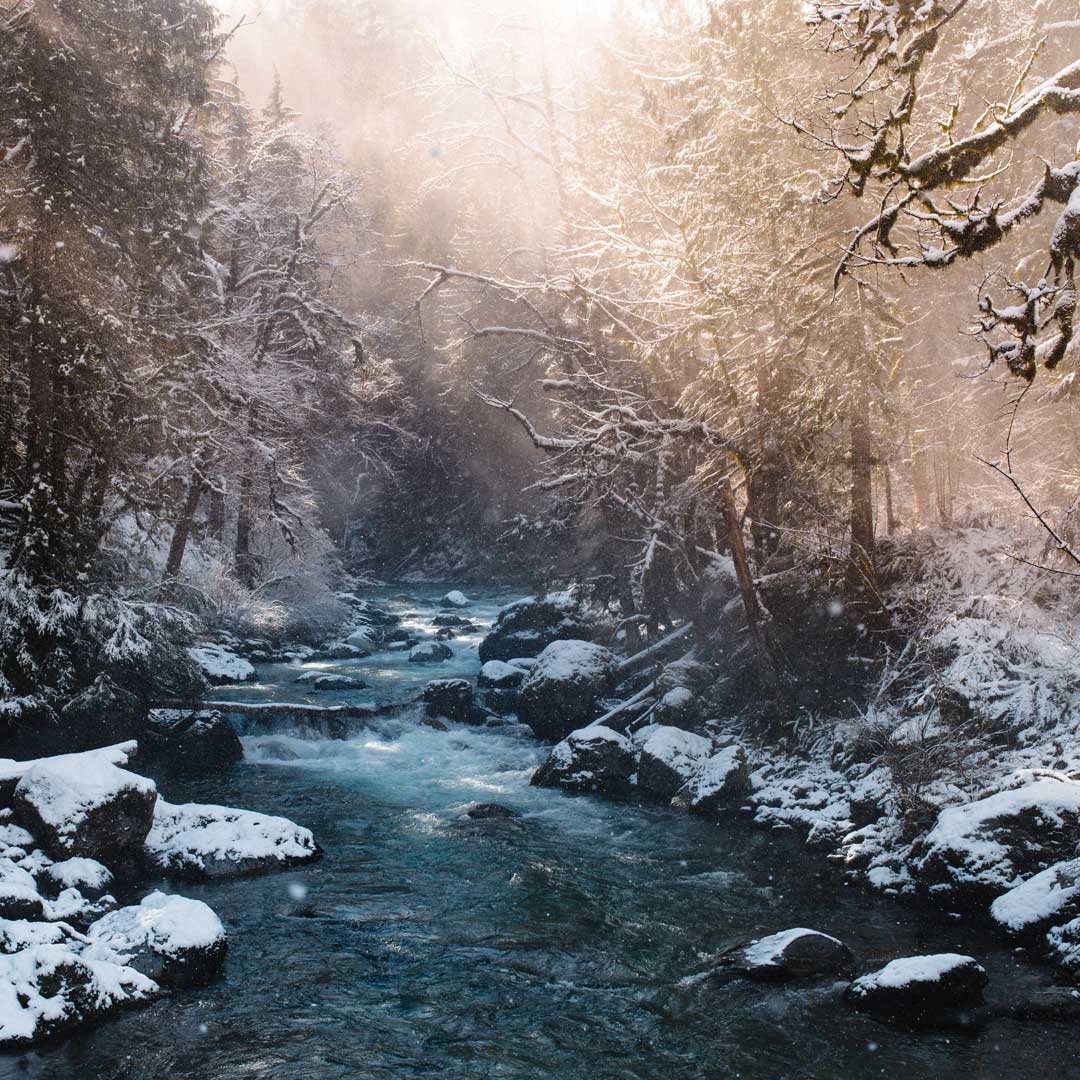
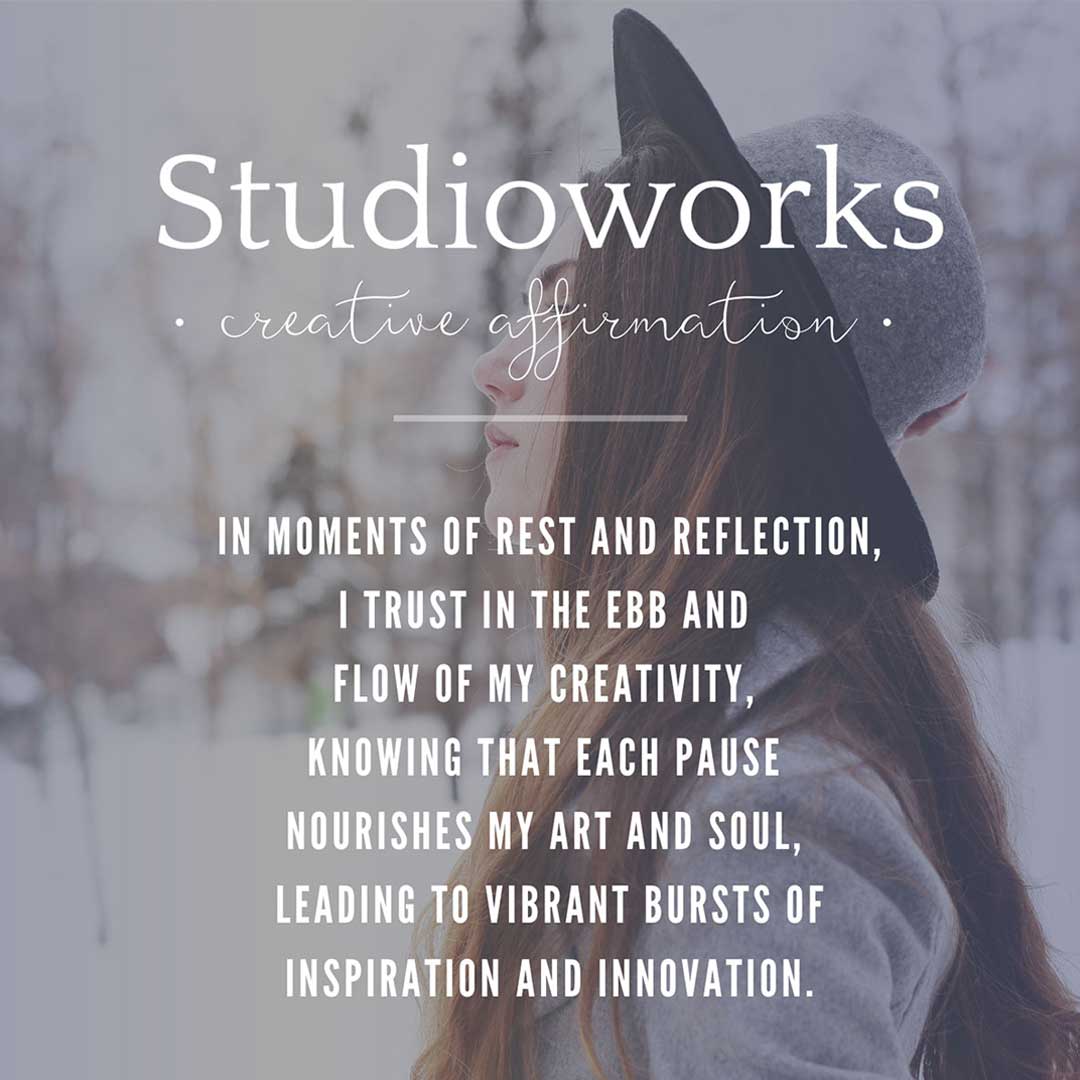

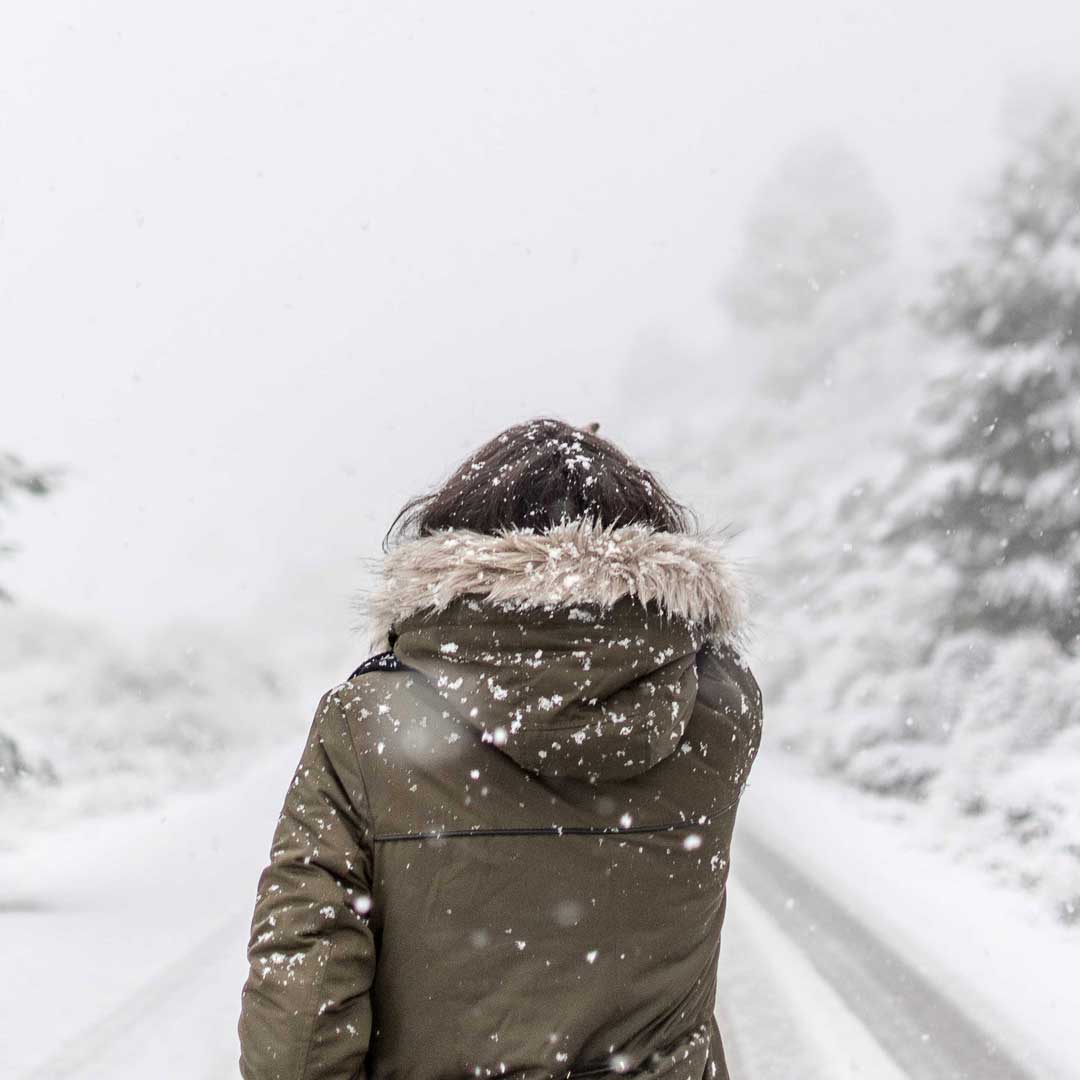
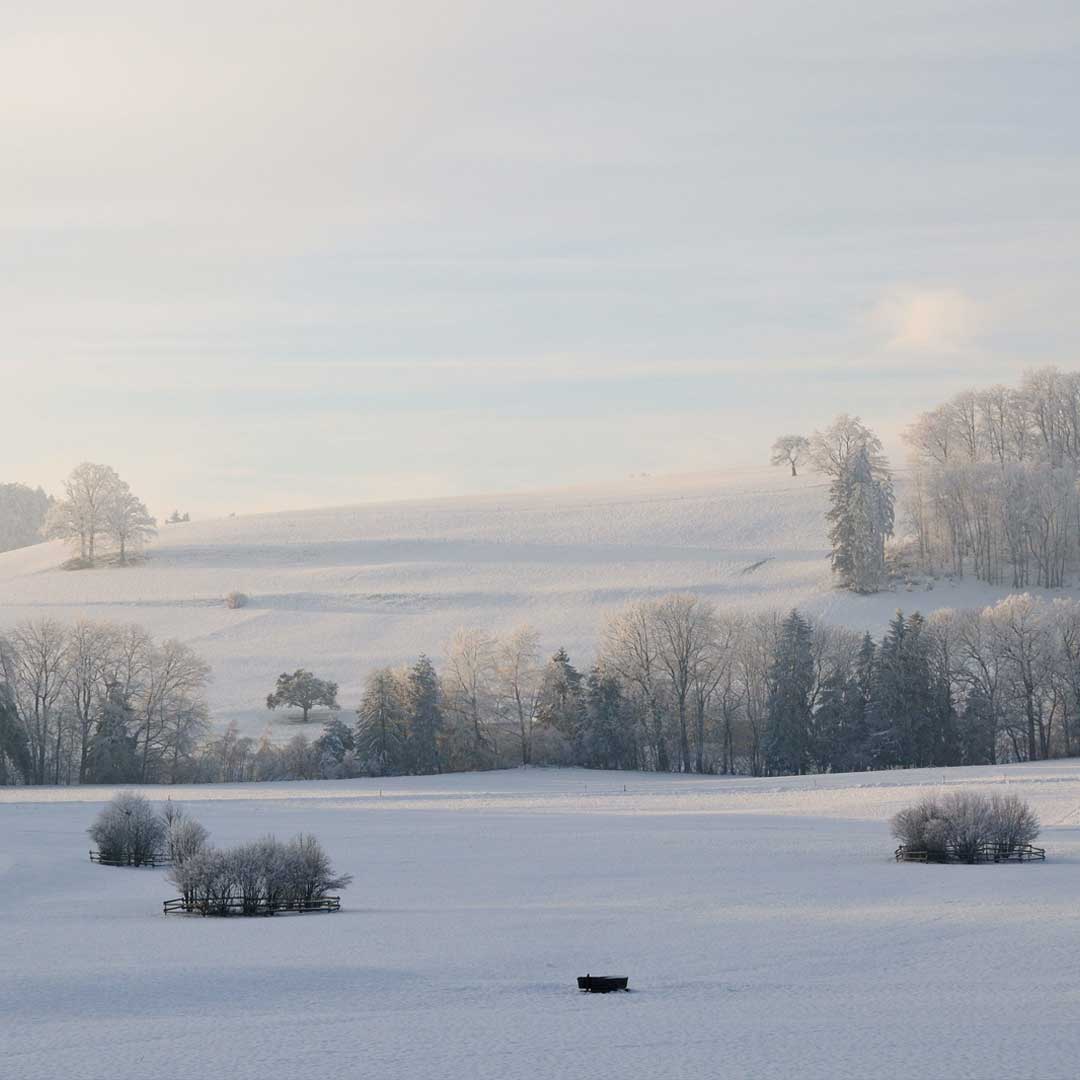
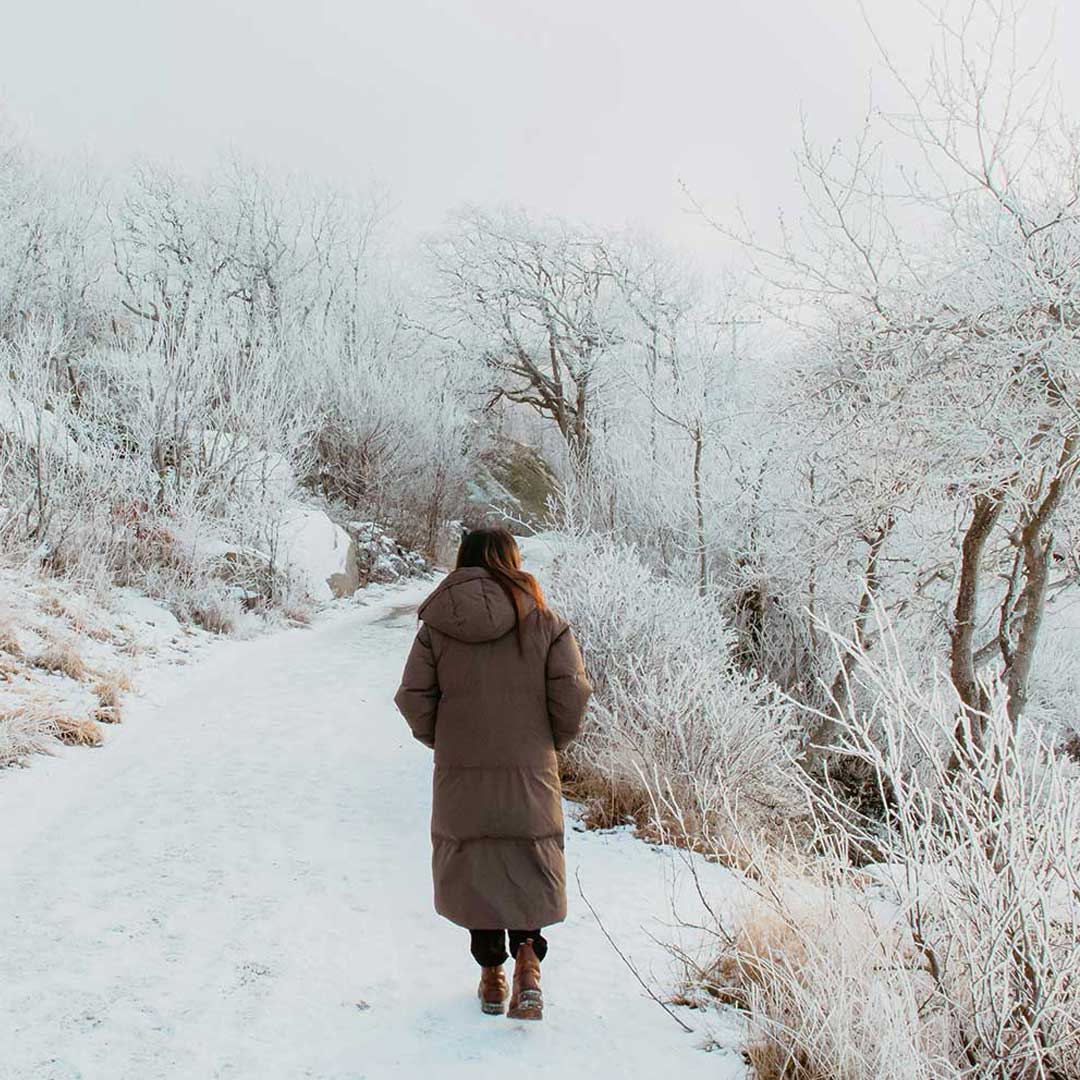
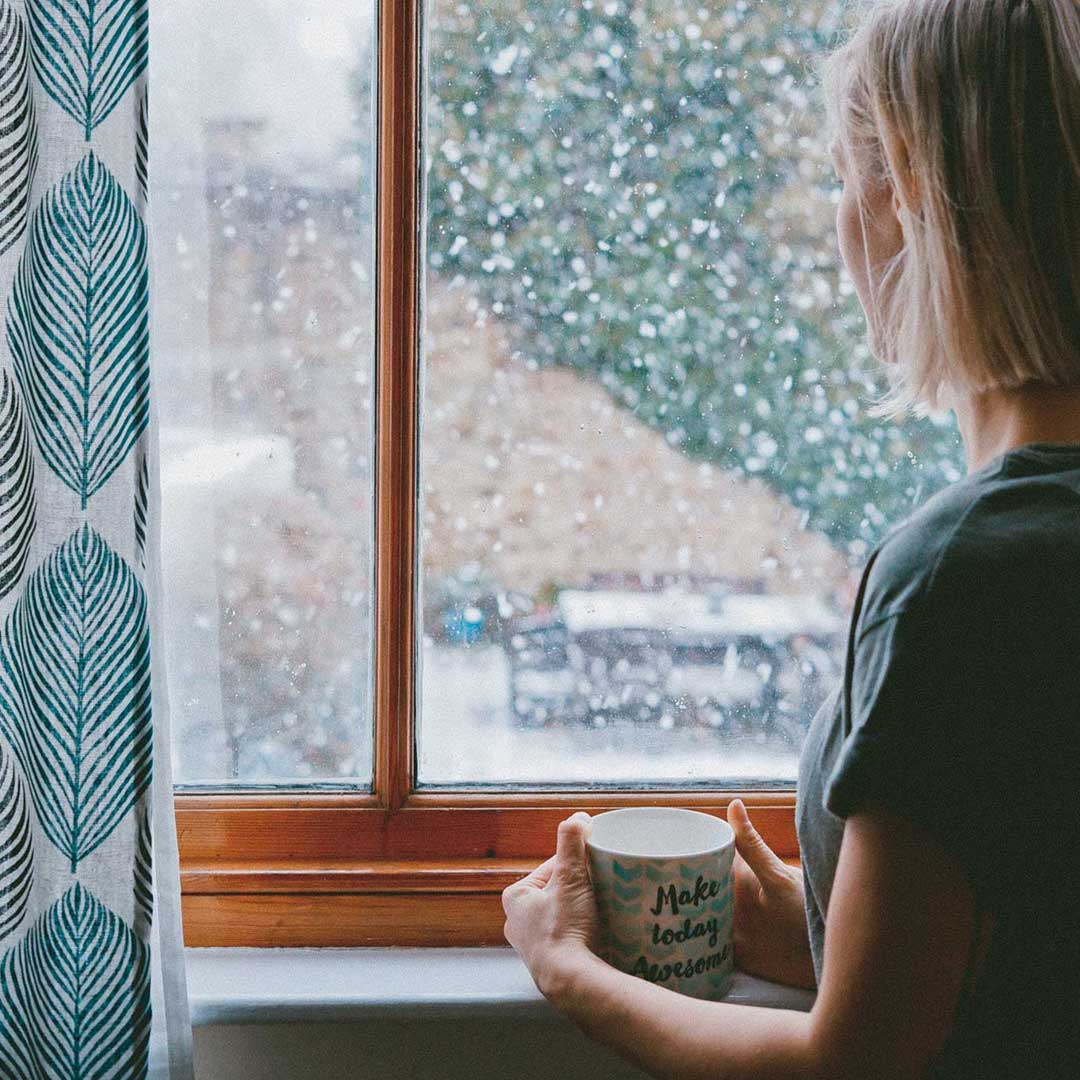
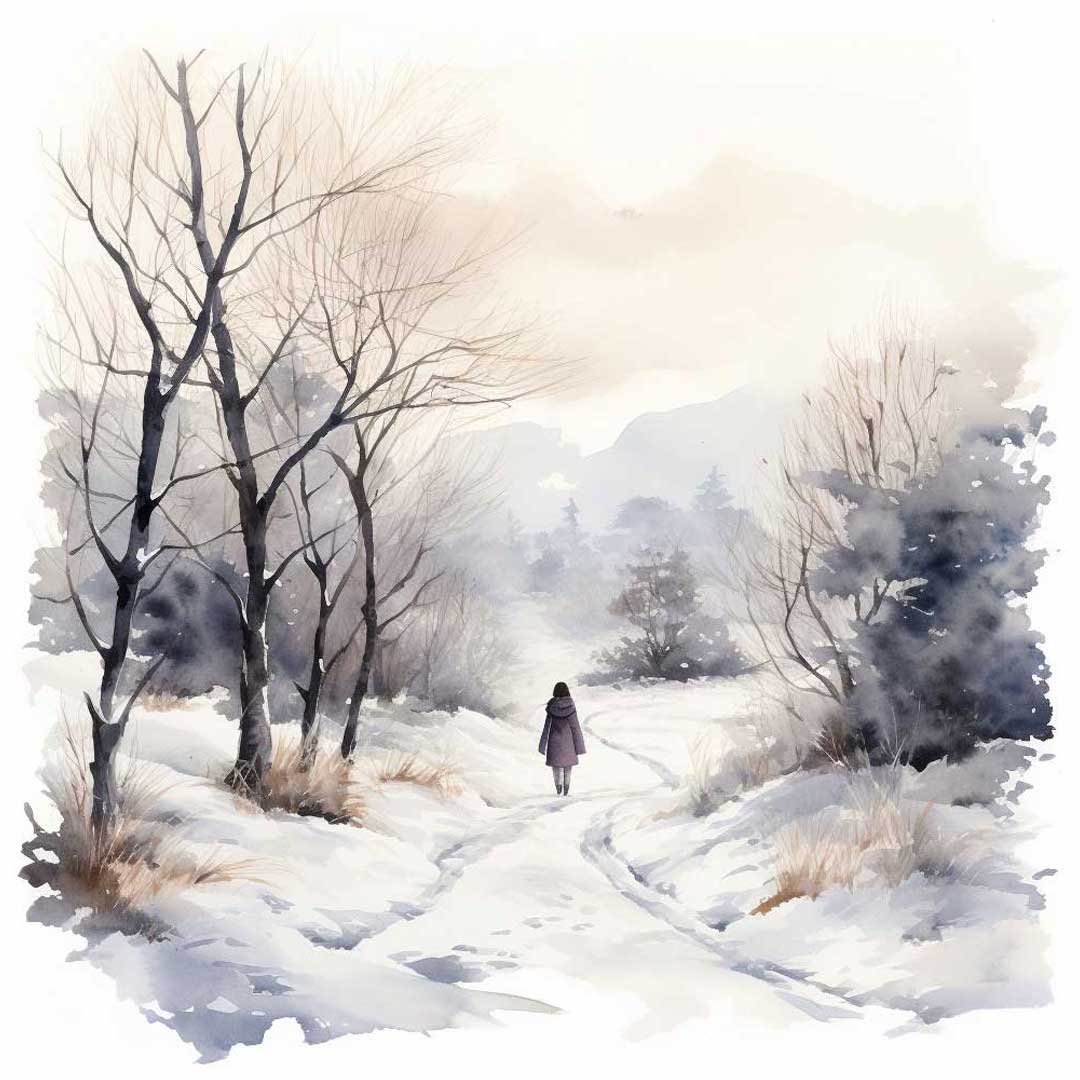
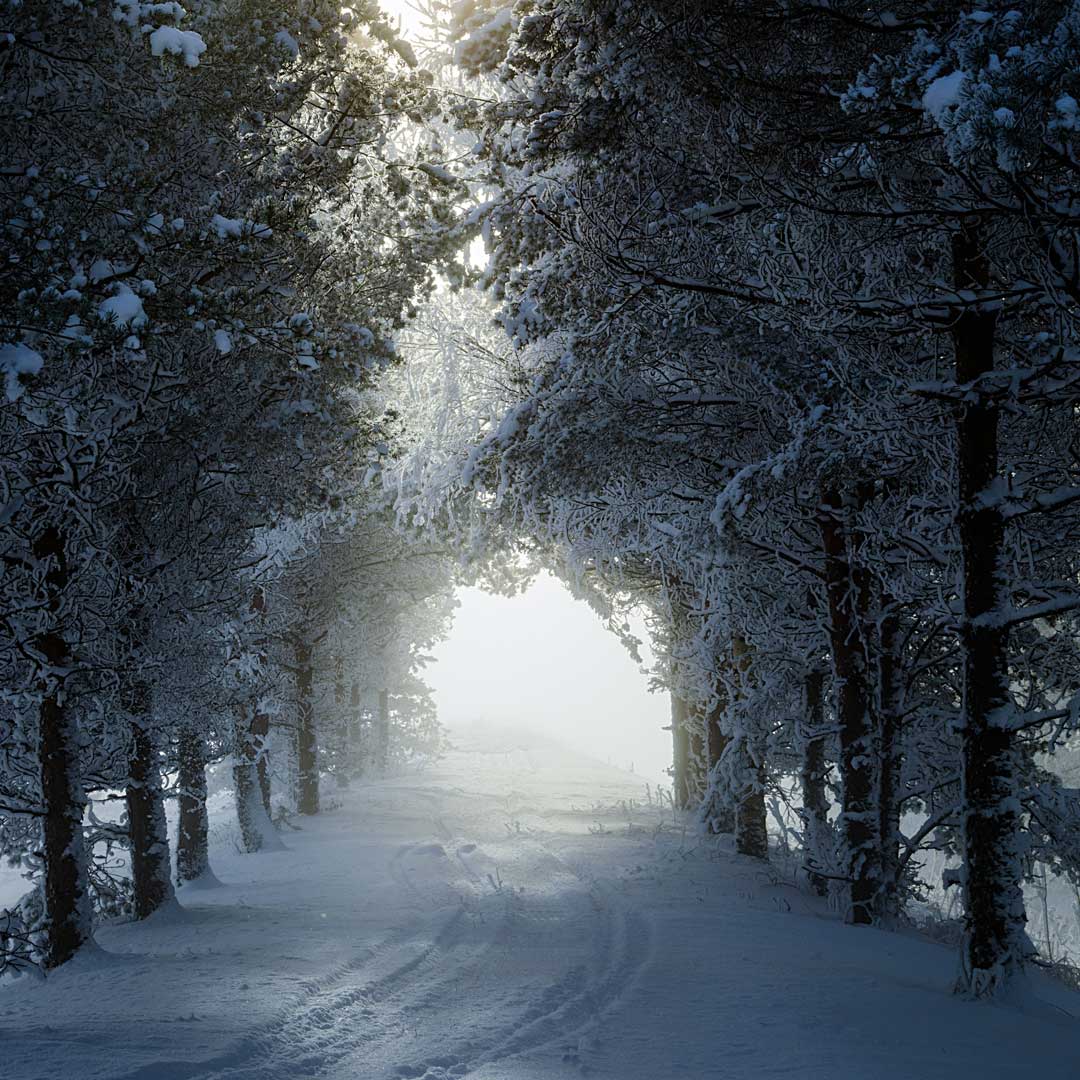
George R. R. Martin may have added a more decidedly sinister tone to the phrase “Winter is coming” when he made it the credo of House Stark. Still, this cautionary reminder has been a part of human culture since time immemorial. People have always understood that challenges are a part of the fabric of life, and the cold, dark days of the wintry season have consistently tested our will not only to survive but to thrive.
In typical ingenious fashion, humans have labored throughout time to create traditions that do more than simply help us fill our bellies and warm our hearths. Those needs may have to be met first, but also of immense importance is embuing our lives with meaning.
Again, art to the rescue. Through creating beauty, we are better able to weather life’s storms. With this in mind, let’s examine how our ancestors rallied to make the winter solstice something to celebrate.
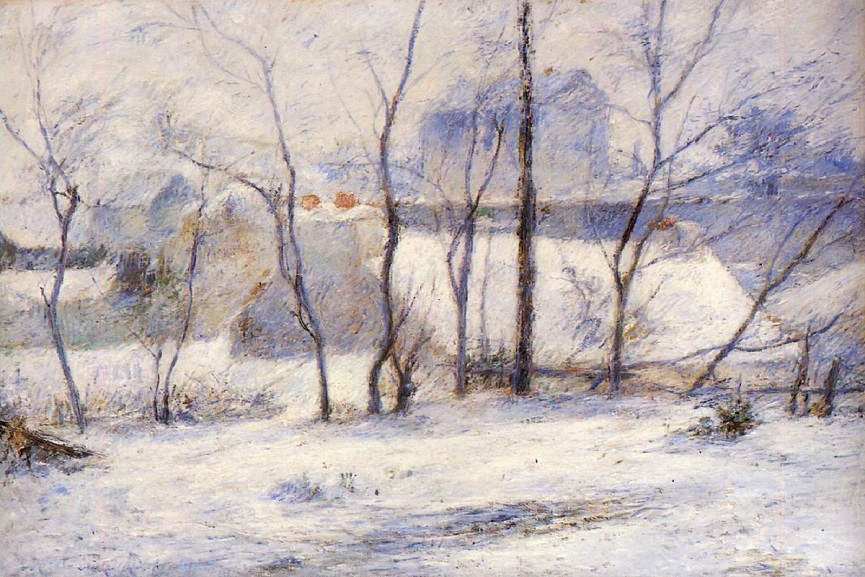
Winter Landscape
Paul Gauguin, 1879
History doesn’t display humans maintaining a continuously rosy perspective of wintertime, but the efforts to swing the dial towards a brighter view are often in evidence.
In addition, delving deep into shadow and reveling in the darkest, longest night of the year, mining it for the potency of contrast, is frequently observable. The mystery, elusiveness, and undeniable magic of praying for the increase of the sun, whilst deep in the inky realm of seemingly interminable night, is pregnant with possibility, artistic and otherwise.
Ancient cultures from around the globe have long celebrated the summer and winter solstices, the longest and shortest days of the year, respectively, honoring them with elaborate ceremonies, intricate structures, and incredible art. From Stonehenge to the Native American Pyramids at Cohokia, the herculean efforts to build in such a way as to garner perfect alignment with the sun on solstice days reveal the great import these dates held for early humanity.
They also demonstrate their deep understanding of the solar system, appreciation for beautiful yet functional design, and sense of interconnectedness with the planet.
The winter solstice was often viewed as a time ripe with the potential for evil to spring from the long and copious shadows.
To combat this concern, virtually every culture created festivals, traditions, and feasts meant to bring light, warmth, and conviviality to dark days. From the Chinese winter festival of Dong Zhi to the ancient Roman festival of Saturnalia, people everywhere long understood the benefit of coming together to celebrate life and ward off despair.
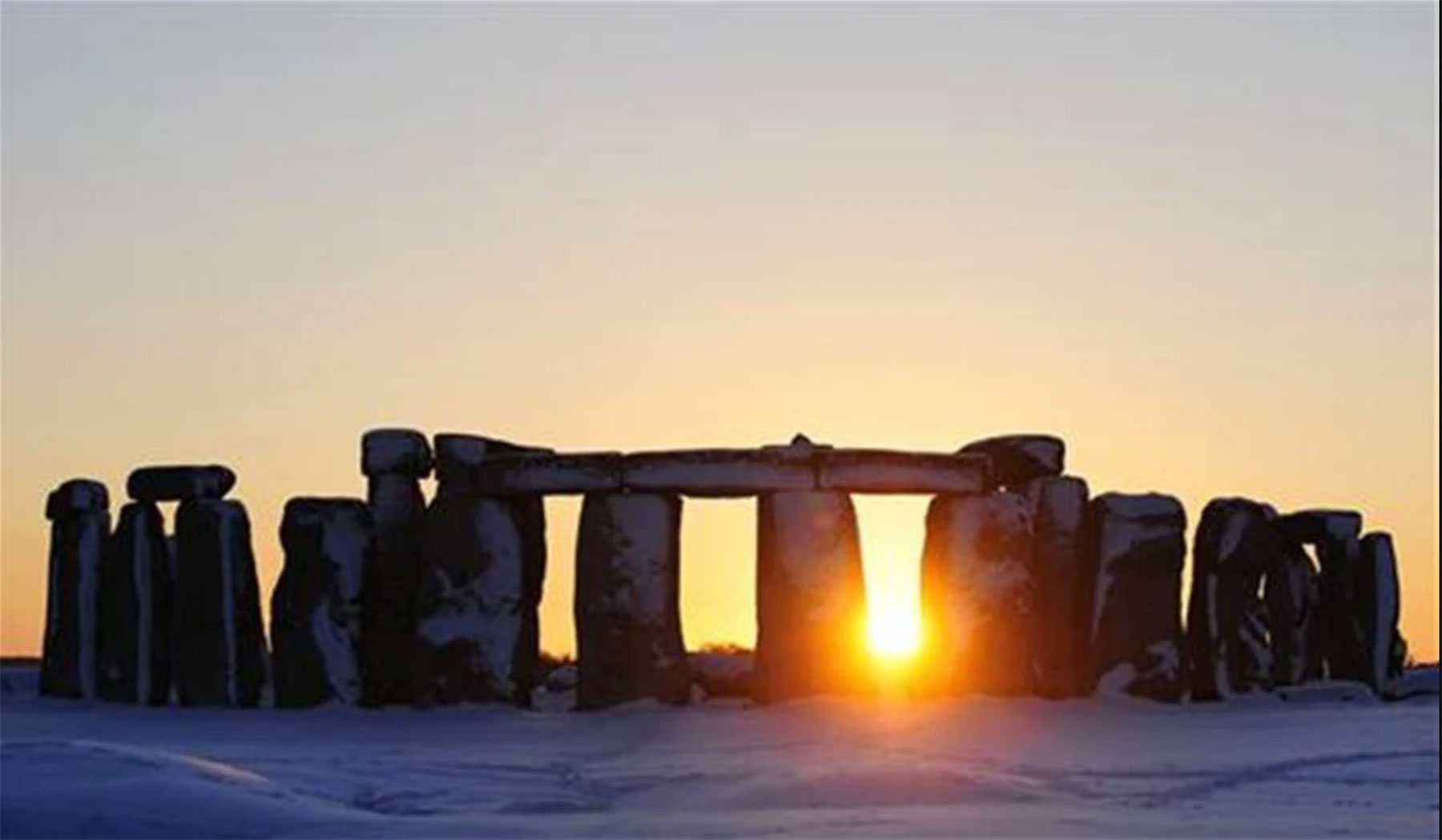
The winter solstice sun at Stonehenge
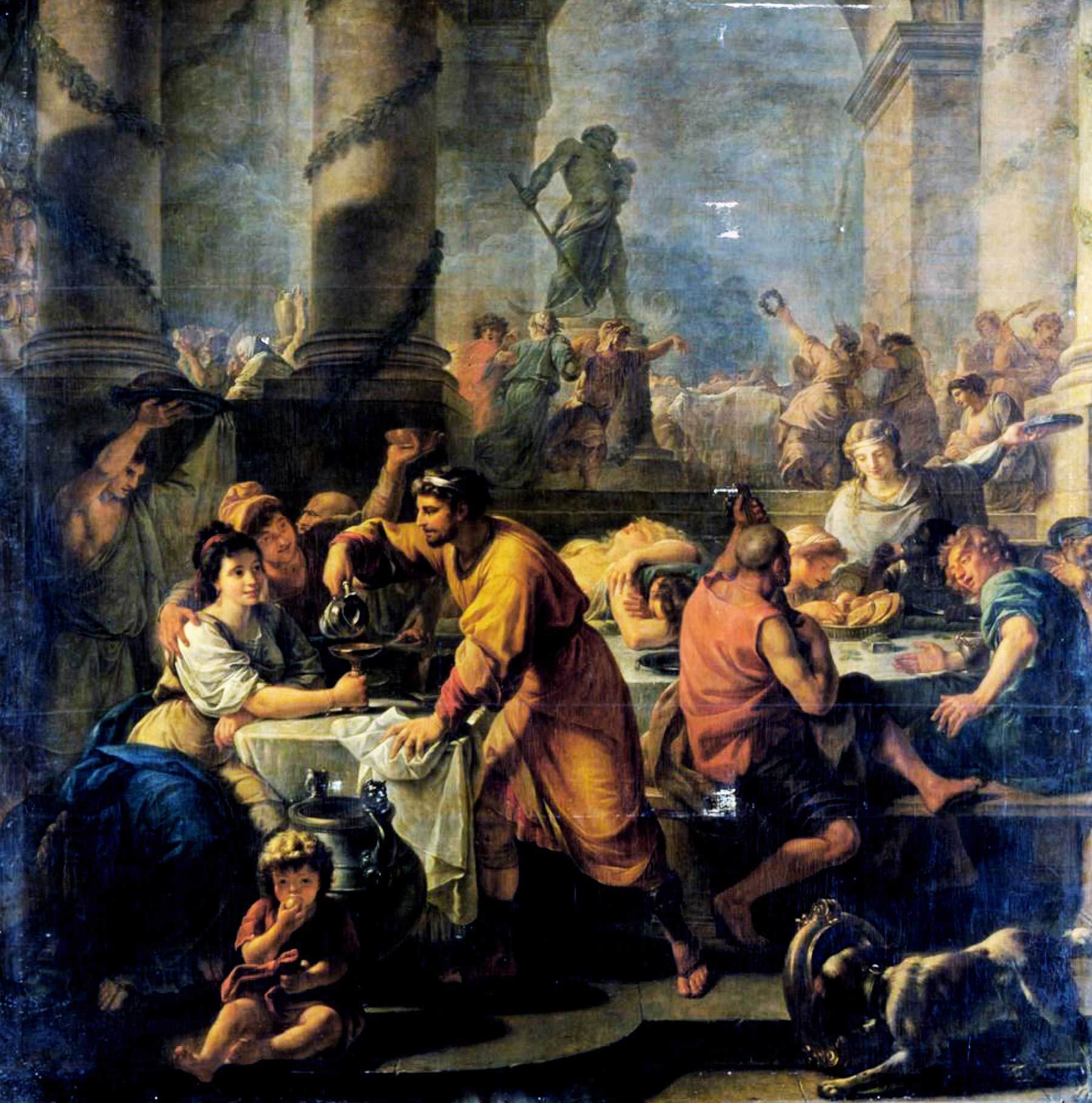
The festival of Saturnalia
Antoine Callet, 1783
For artists, this season has always offered more than a yearning for brighter days. It has been an invitation to explore the profundity of the darkest depths, digging into the subterranean realms of mind and spirit. The results never fail to be evocative, for how much more brilliant is the sun after time spent in darkness?
Fine examples of these murky, labyrinthine creations abound, from Goya’s Black Paintings to Caravaggio’s Calling of St. Mathew. Another notable piece evoking the shadow realm is the etching by Picasso, Blind Minotaur Led by a Little Girl in the Night. There are many others, but what is captured by each is the domain of myth, magic, and the often stunning contrast between light and dark. This contrast is literal and figurative, revealing how exploring all sides of our nature and the human experience generates balance amongst opposites.
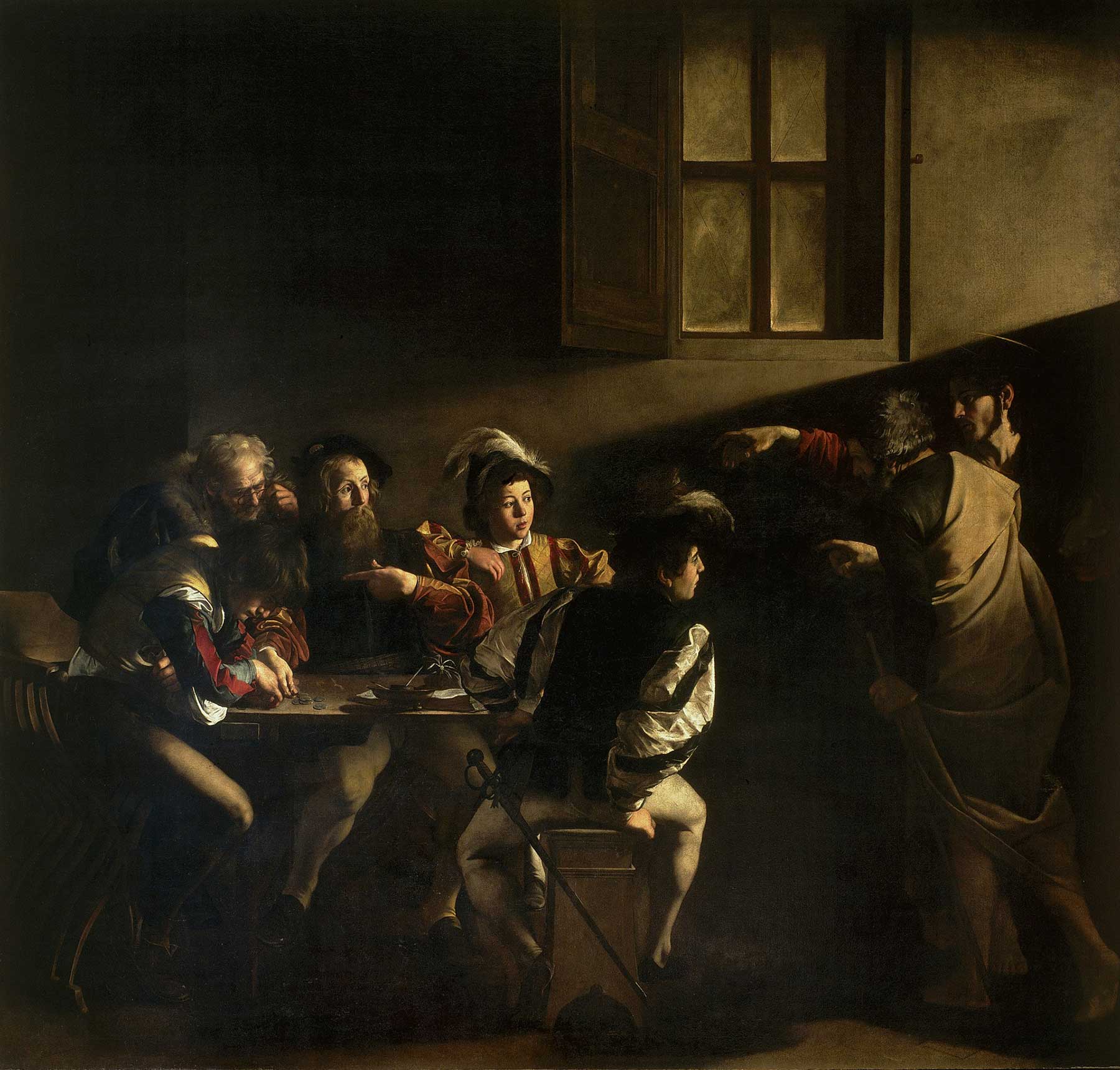
“The Calling of Saint Matthew”
Carravaggio, 1599-1600
The path to making winter solstice a joyful experience rather than a travail we endure is revealed here. By taking the season for what it is and not resisting it, we are opened to the beauty that it entails. This experience enables us to go walking in a winter wonderland rather than slogging bitterly through the long, cold nights.
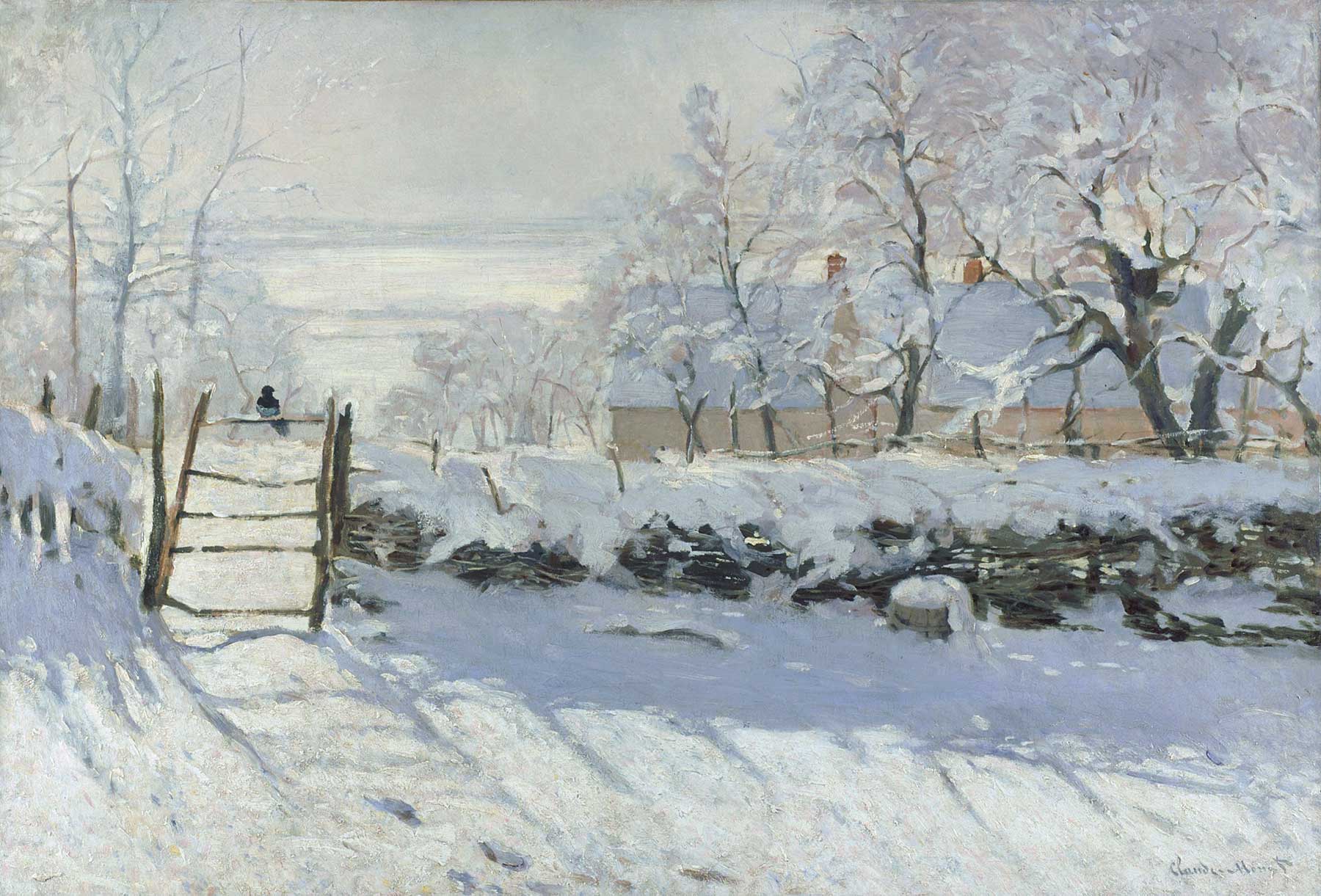
"The Magpie"
Claude Monet, 1868
Winter has always presented people with challenges. Fortunately, humans are bright enough to use our big brains to come up with solutions like decorating with lights, filling our homes with fragrant, mood-lifting herbs and spices, and spending time with people we love to combat the darkness and frigid temperatures. We also have the perspective to understand that we will soon enough be back in the light.
In addition, we can use this time as a source of inspiration, discovering the potency that lives in contrast and learning to play with the dark. We know the beauty that emerges after dormancy and can learn to make this period into a mulch from which glorious flowers will surely spring.
As temperatures drop and days get shorter, people’s moods can sometimes follow suit. Part of it is physical; seasonal affective disorder or SAD may only affect 5% of Americans, but it reveals the potential biochemical downside of too little light. Feeling down in the dumps can make it hard to do anything, let alone feel creative.
Fortunately, a little bit of proactivity can go a long way toward fending off the blues and helping you make the most of this darkly beautiful time of year. Let’s explore some methods for keeping a desirable, productive, and inspired perspective during the winter months. These practices can make all the difference, serving as a beacon of light in the dark.
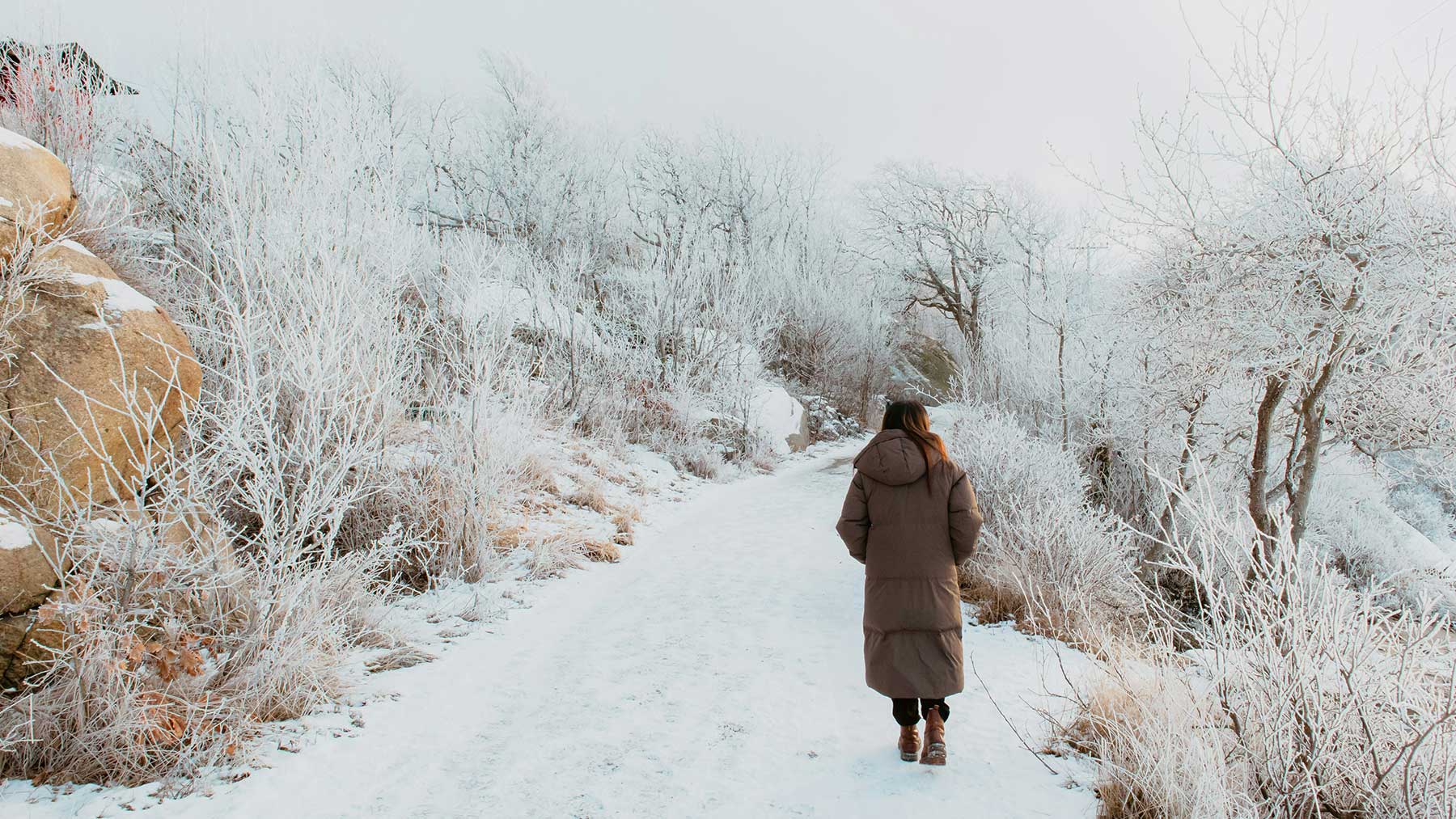
Just because the world is hunkering down for a nap doesn’t mean your imagination must do the same. The winter solstice may be the shortest day of the year, but it also heralds the beginning of our ascent out of the dark. Recognizing this duality is the first step in conquering stagnation. It demonstrates how change is the only constant, encourages us to tune into what is occurring now, and suggests that we might learn to enjoy rather than simply endure this meaningful season.
A great way to foster that enjoyment is to cultivate the following:
Stay in the Flow- Reflect on what you’re passionate about and what fuels you to create. Whatever it is for you, let it form the core around which you set seasonal goals. Once you’re clear on where you want to go, create routines that help you stay the course. Remember to take breaks when you need them and keep yourself present, stay loose, and cultivate play.
Lean Into The Season’s Offerings- Yeah, it’s dark. What does that mean? Lots of shadows and mercurial shifting light. These elements are artistic treasures if you’re tuned in and using your powers of observation. Notice the way you look at things and how much this influences your experience, and use this to consciously cultivate a perspective that garners the most out of this moment.
Don’t Resist What You Cannot Change- If things are going on that aren’t to your preference, take note, but do not fixate. Look at why you dislike those things and what is chafing to you about them, and see if you can turn it around and use that aversion to make something creatively unusual and interesting to you. For example, if the holidays don’t fill you with cheer, create something that mocks them or yourself and allow levity to free and inspire you, encouraging you to have a little fun.
Do Some Soul Searching- The trees have lost their leaves, and much of life is held in suspension, awaiting the time to reemerge. The process of incubation, slowing down, and preparing for a future moment to return to action is something that we can employ as well. Looking inward and examining the desires of our hearts, considering what should be cultivated and what should be pruned, is an insightful, tuned-in way to traverse this season. What blooms when you foster the right conditions may just surprise you.
Winter is a time pregnant with possibility. What we make of it is limited only by our imaginations. If we’re struggling, we can revel in the ephemeral, recalling that this, too, shall pass. We can also light candles, put up strings of light, open our doors to loved ones, take sunrise walks, and otherwise consciously bring more joy to our days.
The efforts we make to brighten our moods can do wonders for our creative process. And, when we’d rather hibernate with our thoughts, incubate ideas, and explore the depths of the shadows, we can enjoy that indulgence too. The best way to stay creative during the winter months is to remember that no two lights shine the same, and it's up to us to illuminate what, where, and how we will.

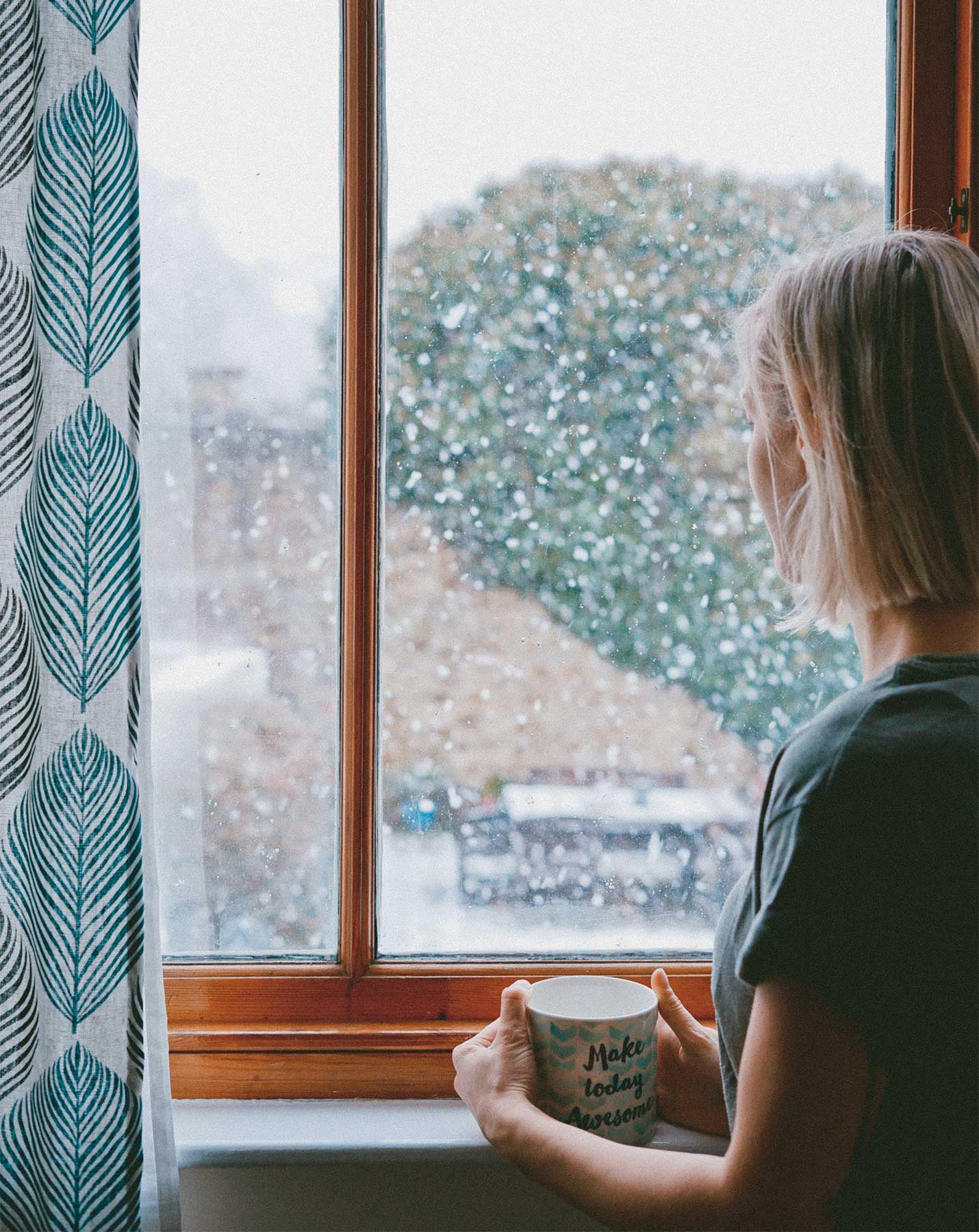
As an artist, when I contemplate the dictionary definition of "rest", I see it as an essential counterpoint to the dynamic process of creation.
In the ebb and flow of artistic practice, rest is not merely a pause but a vital phase of the creative cycle. It's during these quieter moments that the soil of imagination is left to settle and enrich itself. Just as the earth rests in winter only to bloom in spring, an artist's mind and soul require these periods of rest to process experiences, to allow ideas to gestate, and to rejuvenate the spirit.
Rest can take many forms in an artist's life. It might be a walk in nature, a period of meditation, or simply stepping away from the studio to engage with the world in a different way. This time away from active creation isn't about stopping the artistic process; rather, it's an integral part of it. It's a time when subconscious thoughts can percolate and unexpected connections can be made.
In my own practice, I've found that rest often leads to the most profound breakthroughs. When I return to my canvas after a period of rest, I come with fresh eyes—my senses sharpened and my perspective renewed. The brush strokes that felt forced before now flow with ease, and solutions to creative blocks often reveal themselves with a clarity that only comes from stepping back.
So, while the dictionary may define rest in terms of inactivity, in the artistic realm, it is anything but inactive. It is a dynamic and productive part of the creative process, allowing for reflection, growth, and ultimately, the flourishing of creativity.
Get those journals and sketchbooks out and get ready to do some self-reflection and writing. Try not to judge what comes out of these writing sessions. Don’t worry about punctuation or grammar or any of that. You can even just make lists if that suits you better. Remember, journaling is a deeply personal practice, so feel free to adapt these prompts to better suit your own thoughts and experiences.
Take a moment to get quiet. Still yourself by doing some gentle breath work. Light a candle. Now ask yourself some questions to reflect upon:
These prompts are designed to help you delve into the quieter, often overlooked aspects of the creative process, recognizing the importance of rest, reflection, and the rejuvenation that can come from a period of "wintering."
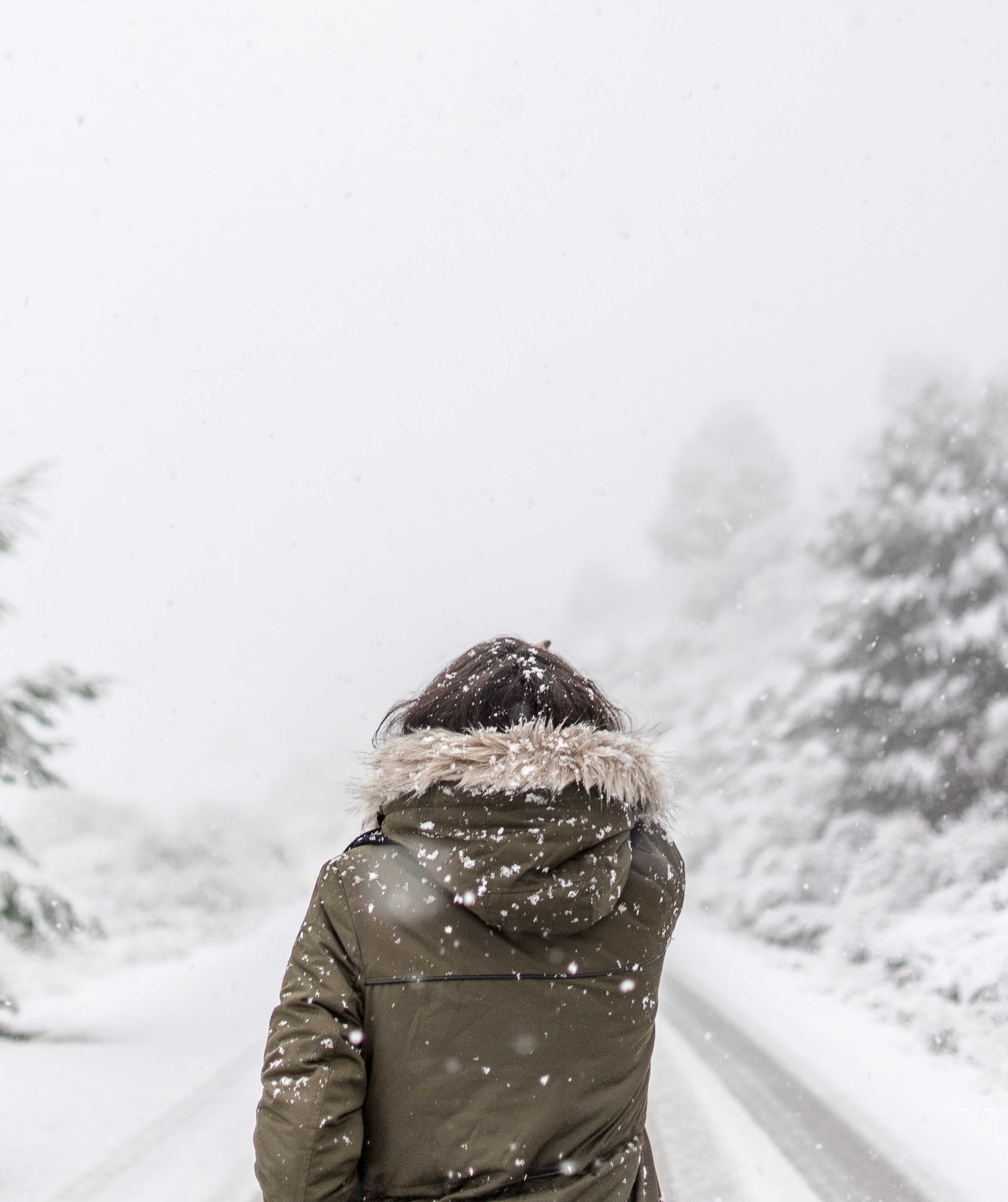
I am sharing this beautiful meditation from one of my favorite meditation masters - Rachel Hillary. This journey will help you connect to this sacred time of the Winter Solstice…
Rachel will share a little about this experience -
This is a guided journey I have crafted, to deliver you into the magic of your own being. We will dwell between the lightness and the dark, and watch as the shadows cast magical spells. This adventure begins on the beach by dark, during the middle of a thunderstorm. You take shelter in a candlelit cave nearby, and a beautiful, subtle process of spiritual germination unfolds. We acknowledge the majesty of the shadows, and welcome in the sweetness of the new light.
lots of love,
Rachel
Each month we will have a positive affirmation. I recommend you print out this affirmation and put it in your sketchbook or somewhere in your studio. Recite the affirmation out loud each time you show up to create. Saying words aloud is powerful and can begin to re-write some of our own limiting beliefs or calm our fears. Try it now…
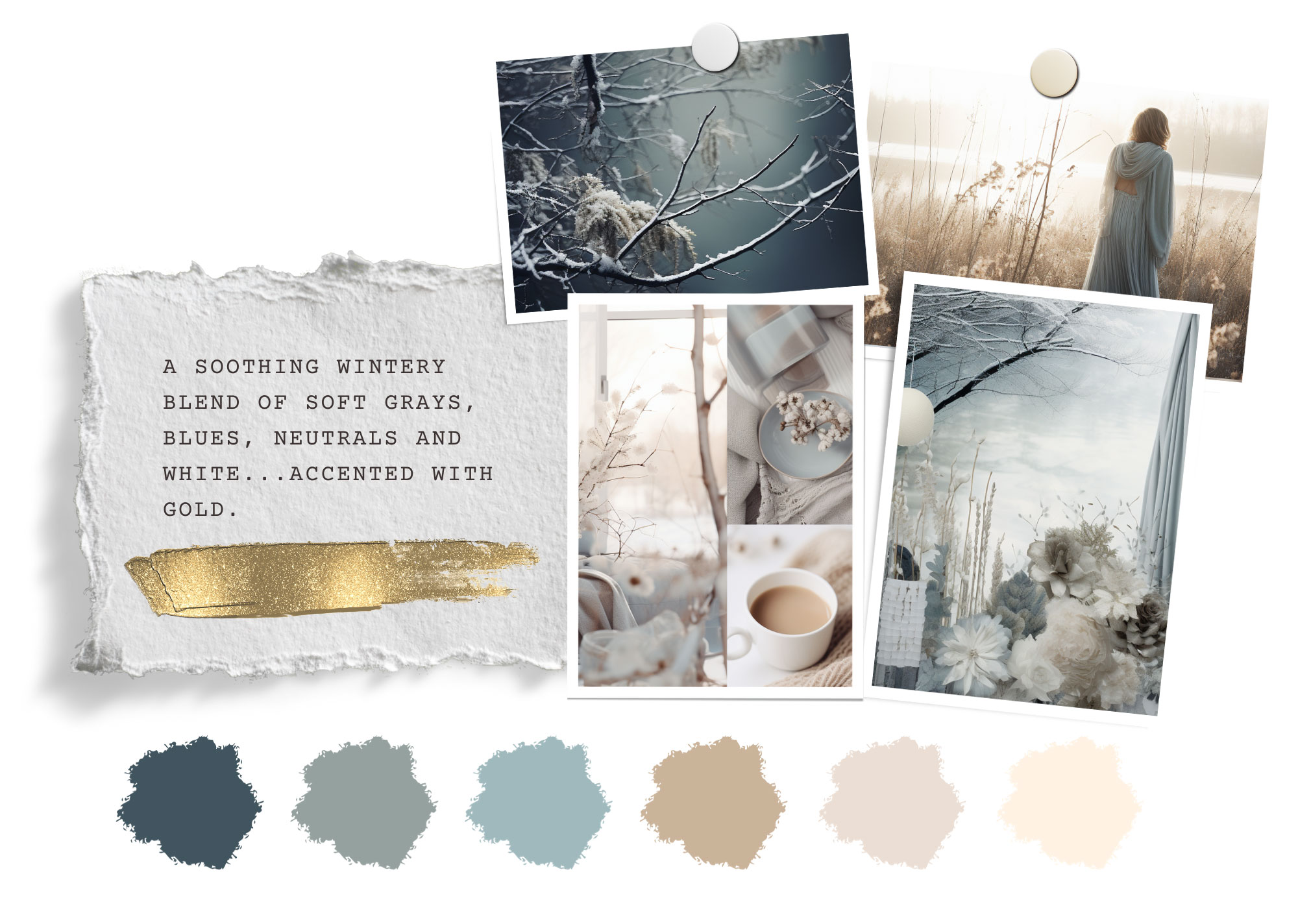
For our December theme, we're embracing the serene and contemplative essence of the winter season. This month, our palette is a homage to the hushed landscape of the colder months, featuring a spectrum of soft grays that recall the quiet of a winter's fog, the crisp blues of twilight on a frosty evening, an array of neutrals that bring to mind the bare branches against a snow-laden sky, and the pristine whites of freshly fallen snow. These hues capture the tranquil solitude of winter, reflecting the season's soft blankets of silence and the gentle whisper of snowflakes. Let's immerse ourselves in the calm and soothing symphony of these colors and discover the peaceful harmony they create together.
This month, I had to share one of my favorite Winter poems by dear Mary Oliver. If this poem creates inspiring images in your mind try your hand at illustrating it in your sketchbook! I hope you enjoy…
Andrew Wyeth was an American artist known for his realism and regionalism, born on July 12, 1917, in Chadds Ford, Pennsylvania. He was the youngest son of the illustrator and artist N.C. Wyeth and was homeschooled due to his frail health. His father, a significant influence on his work, trained him in art from an early age. Wyeth started drawing at a young age and quickly demonstrated a remarkable talent for capturing the essence of his subject matter.
Wyeth’s art is characterized by his intricate technique and the clear, razor-sharp realism of his paintings. He often used a muted color palette, which became one of his signature styles. His most famous painting, "Christina's World" (1948), is a prime example of his ability to evoke emotion and narrative through his realistic depiction of the American countryside and its inhabitants.
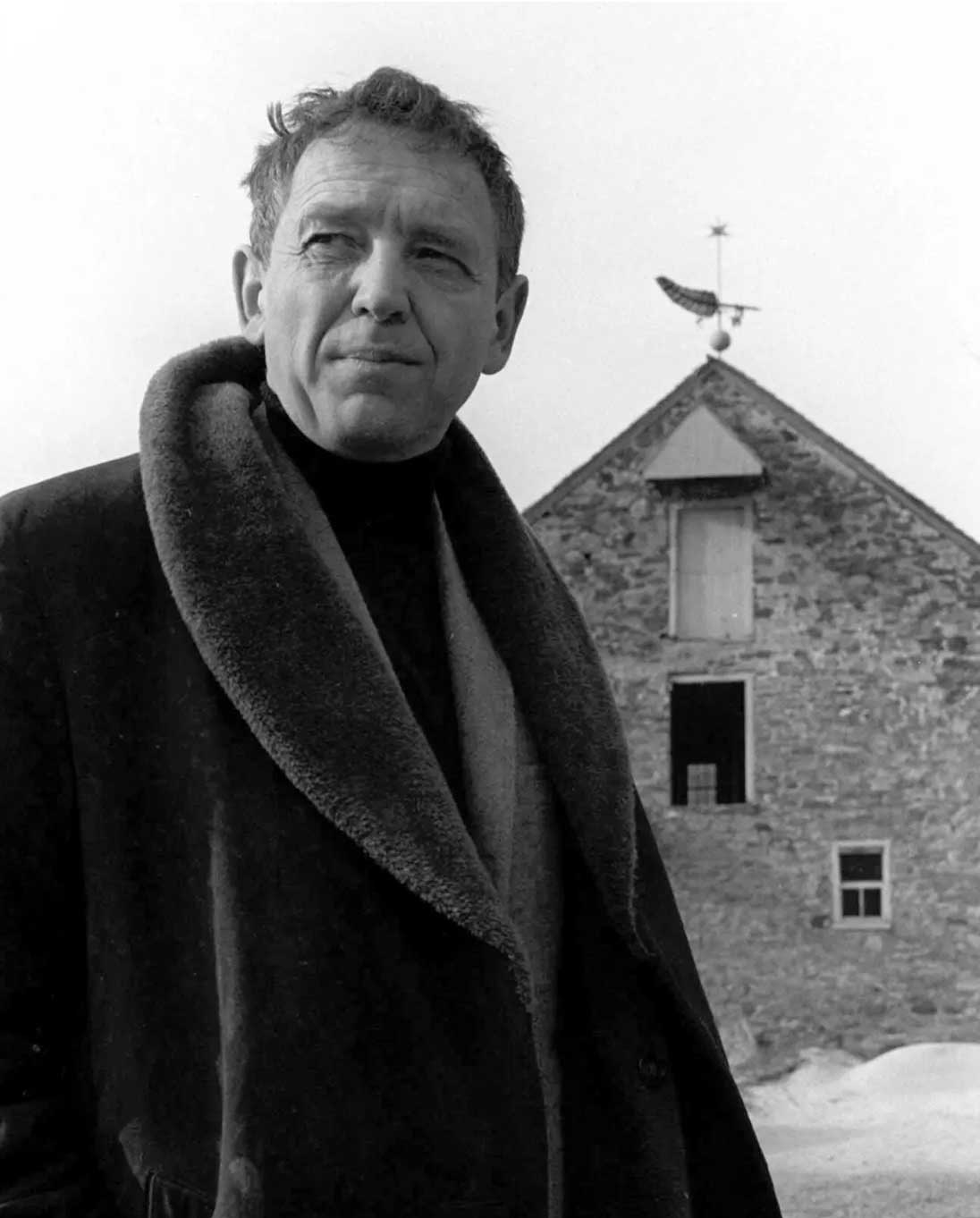
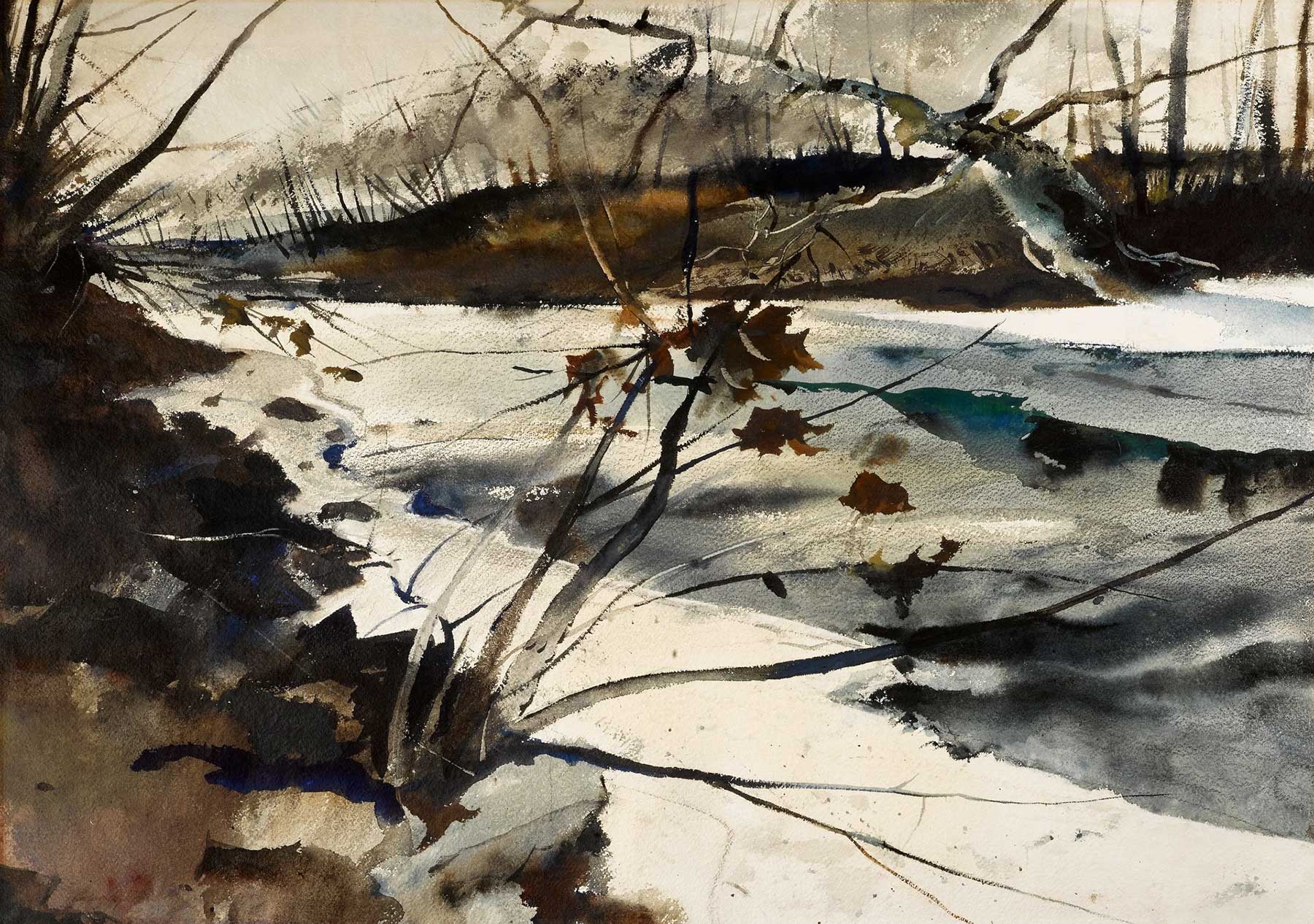
"Brandywine in Winter"
Andrew Wyeth, 1943
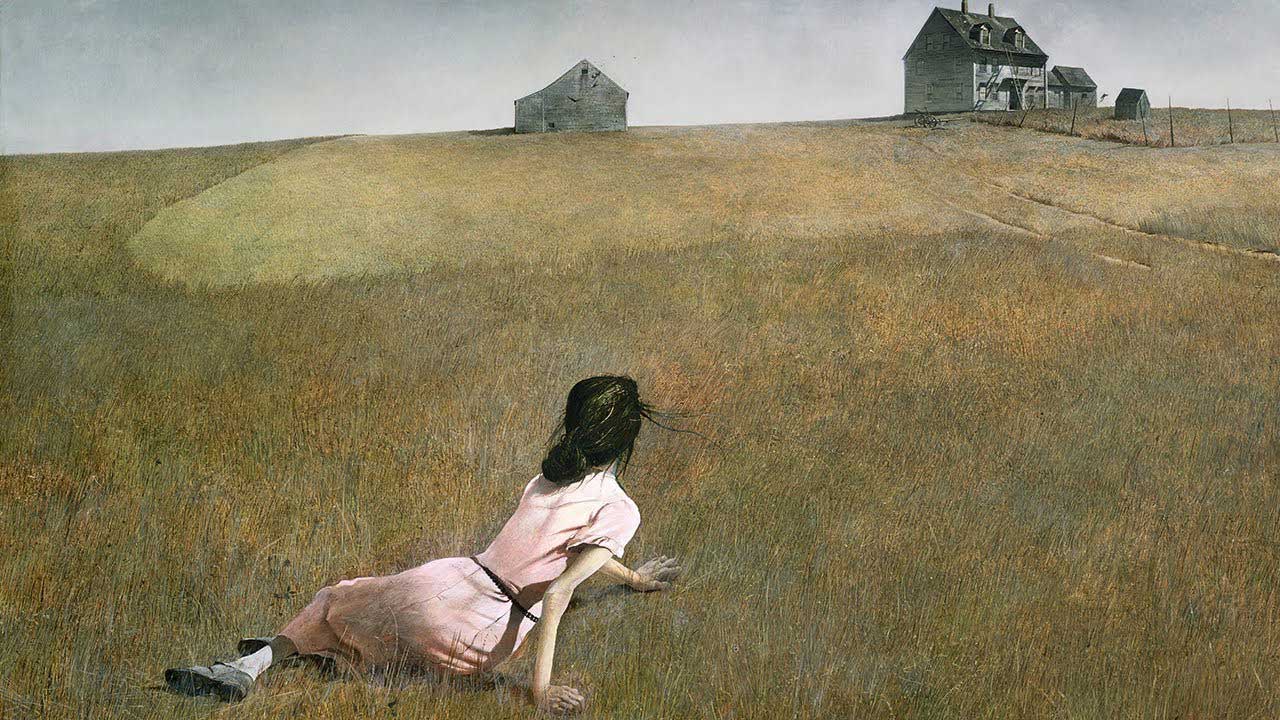
"Christina's World"
Andrew Wyeth, 1948
Throughout his life, Wyeth created numerous winter landscapes that are particularly evocative of the themes of rest and reflection. These paintings often feature the stark, barren landscapes of Pennsylvania and Maine, where he spent much of his time. The subdued color palette and the often solitary subjects in these landscapes evoke a sense of solitude and introspection.
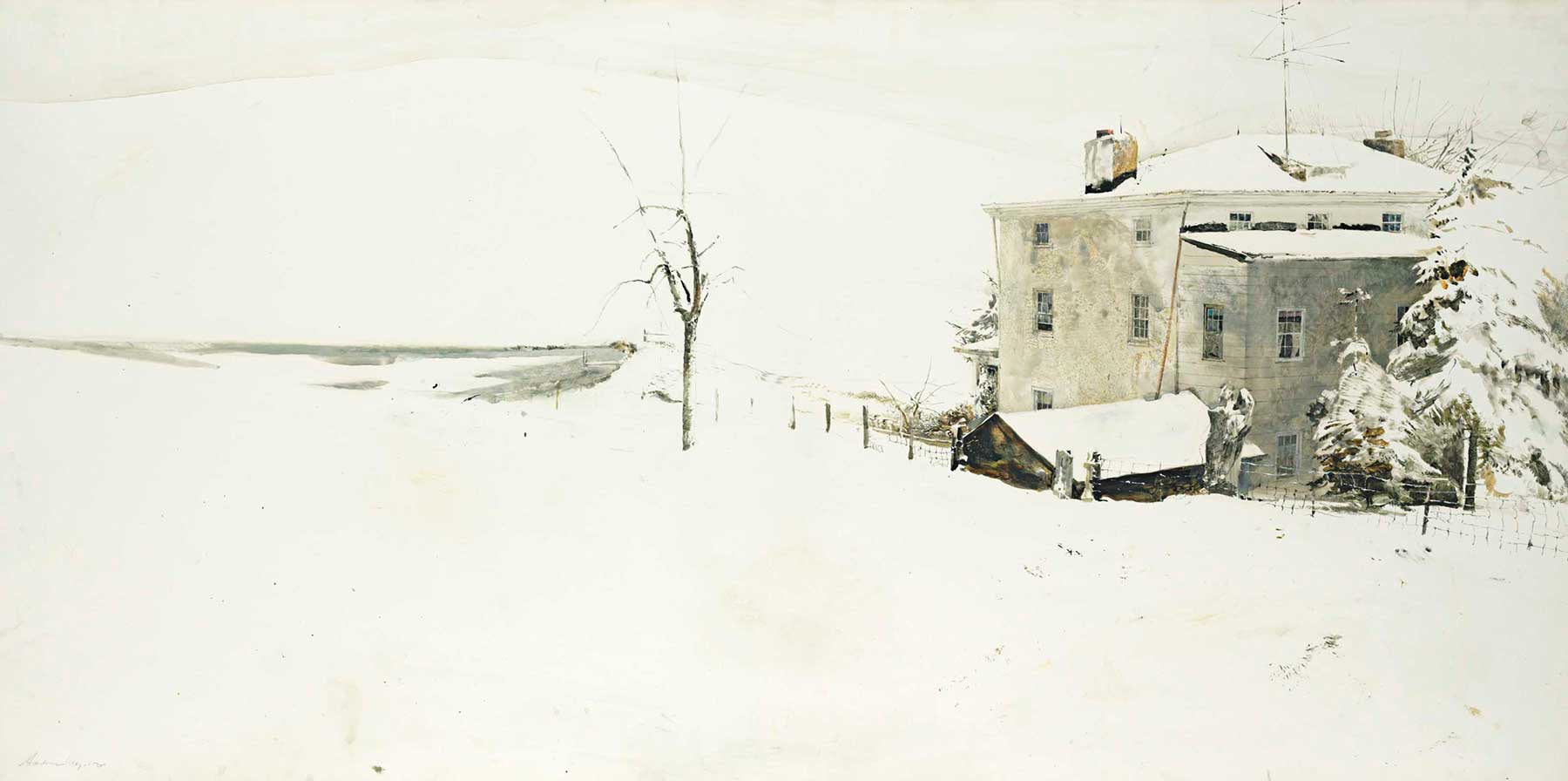
"Heavy Snow"
Andrew Wyeth, 1967
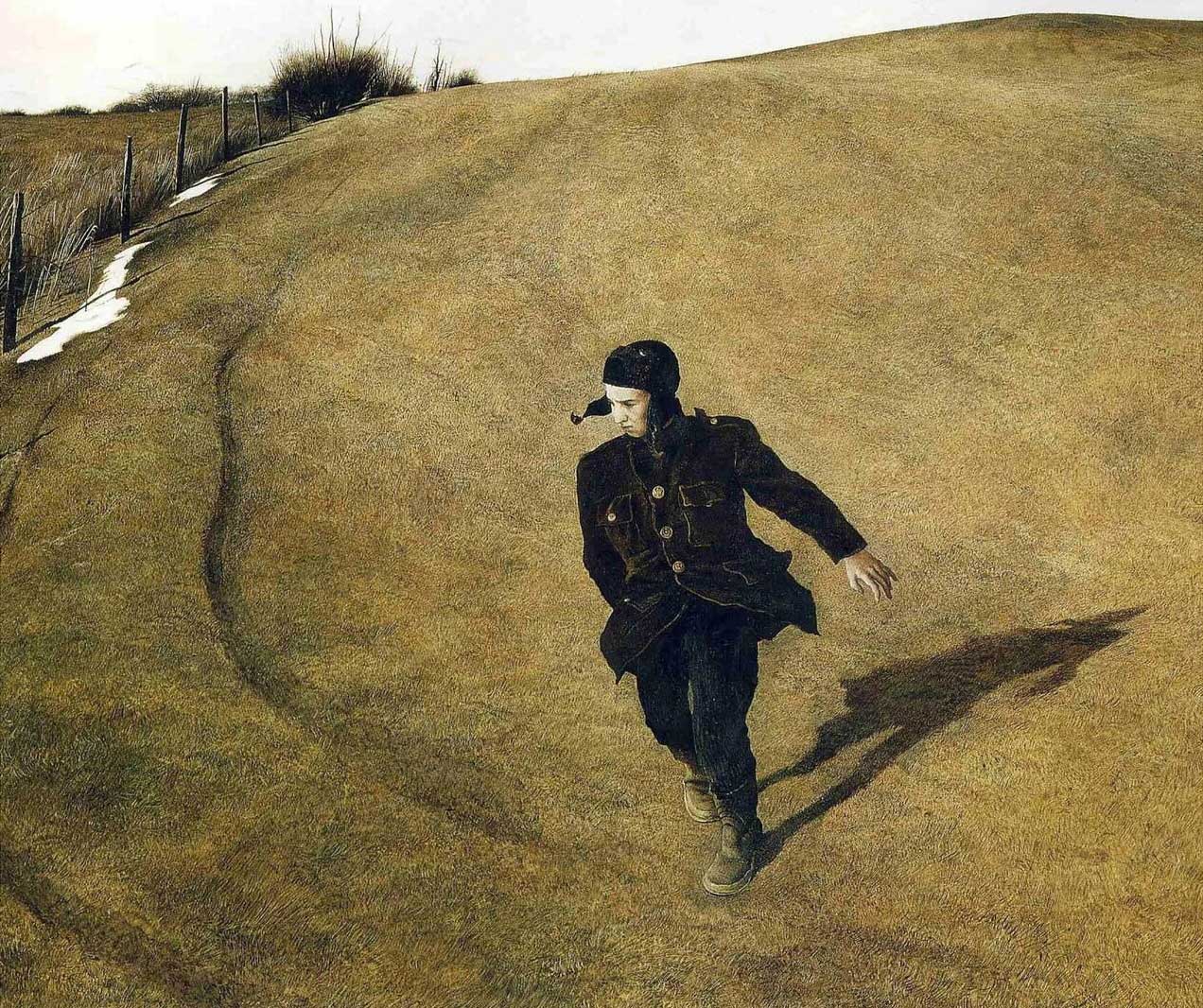
"Winter"
Andrew Wyeth, 1946
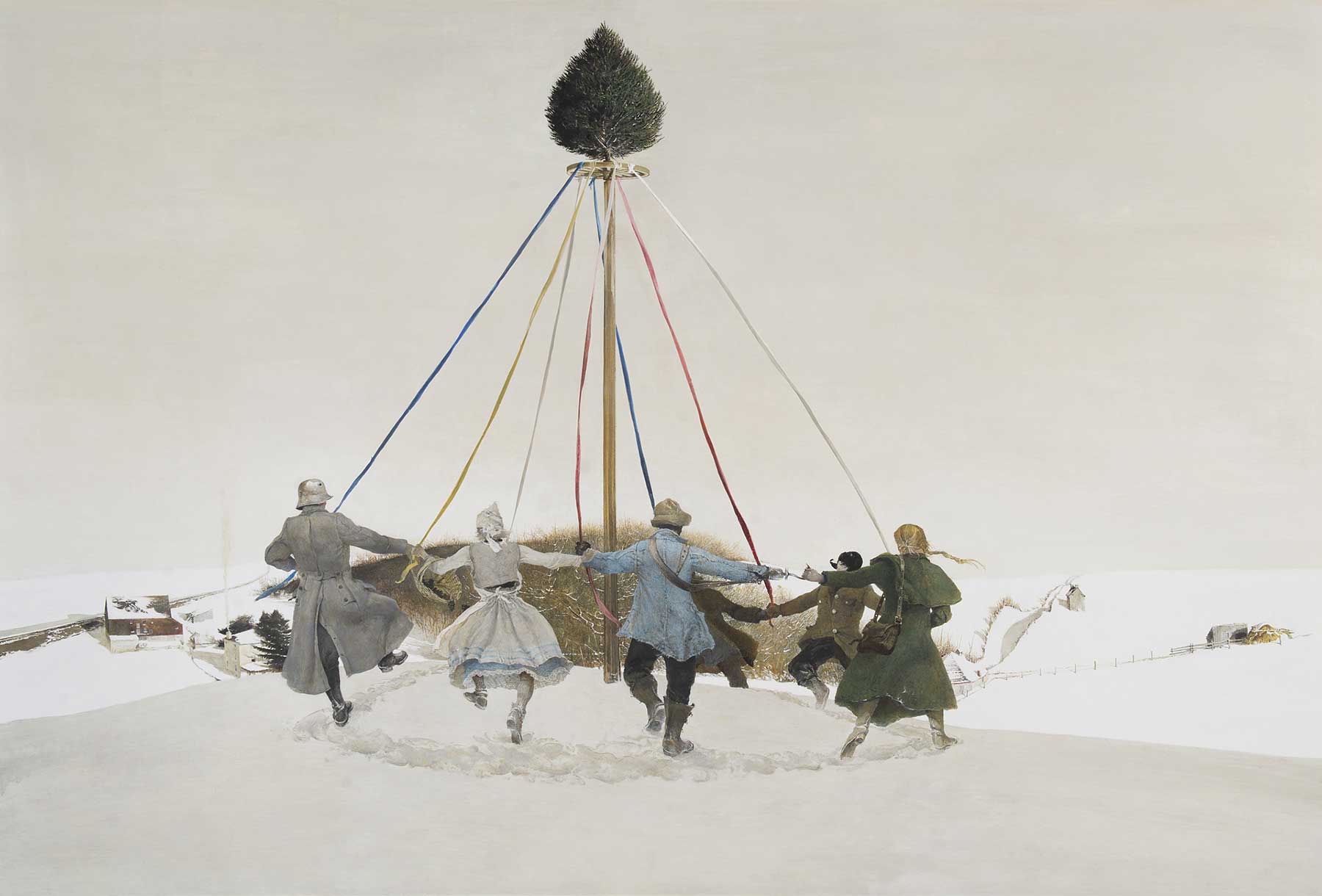
"Winter Hill"
Andrew Wyeth, 1989
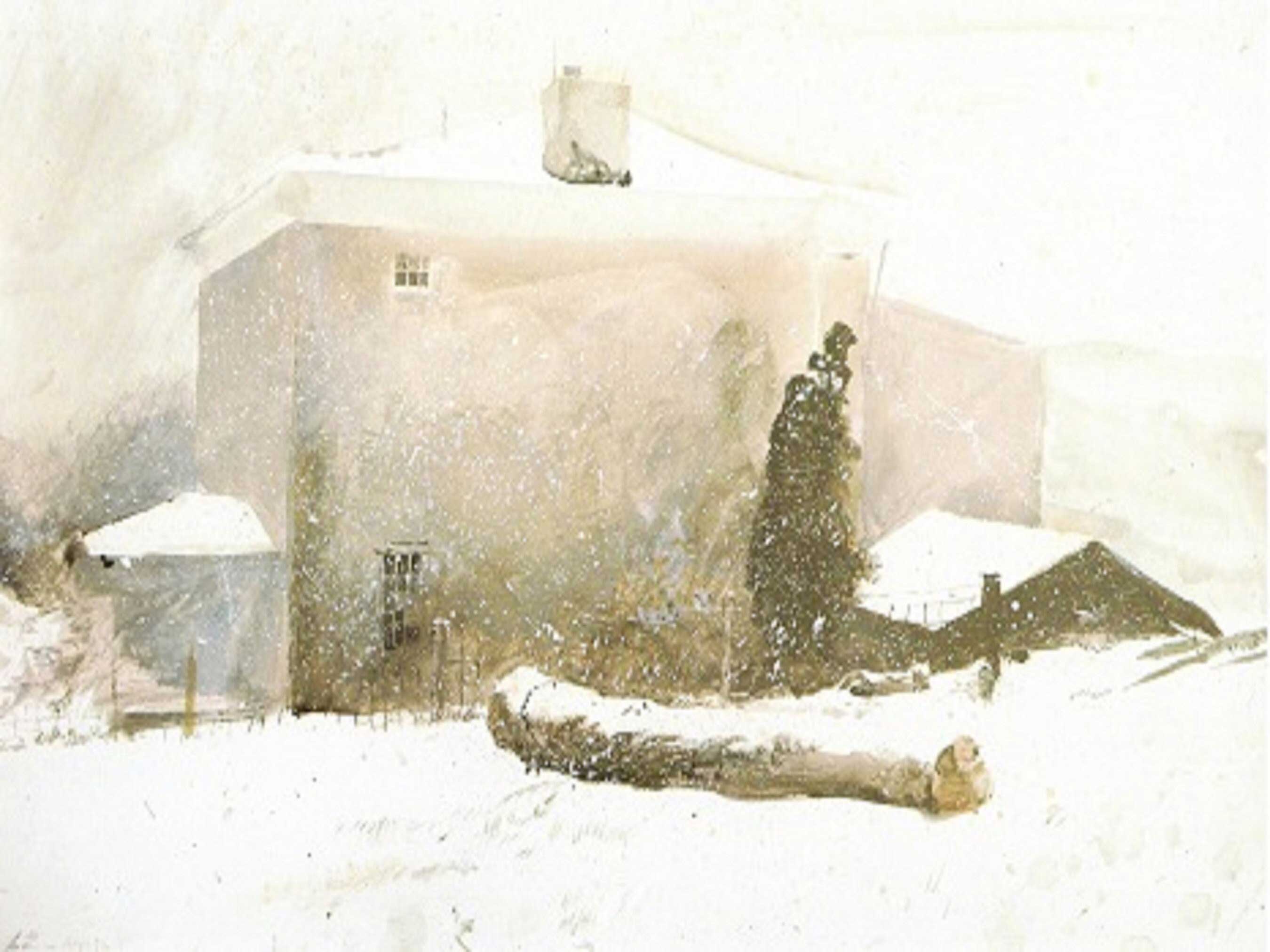
"First Snow"
Andrew Wyeth, 1959
In these works, there is a profound sense of the cyclical nature of life and the earth's rhythms, mirroring the human need for periods of rest and reflection. Just as the solstice is a time for contemplation and looking inward, Wyeth's winter landscapes invite us to turn inward, to experience the stillness, and to reflect on the quiet beauty and the stark realities of life.
Andrew Wyeth passed away on January 16, 2009, at the age of 91, leaving behind a legacy that has deeply influenced American art. His work remains a poignant reminder of the power of stillness and the profound depth that can be found in moments of quiet solitude.
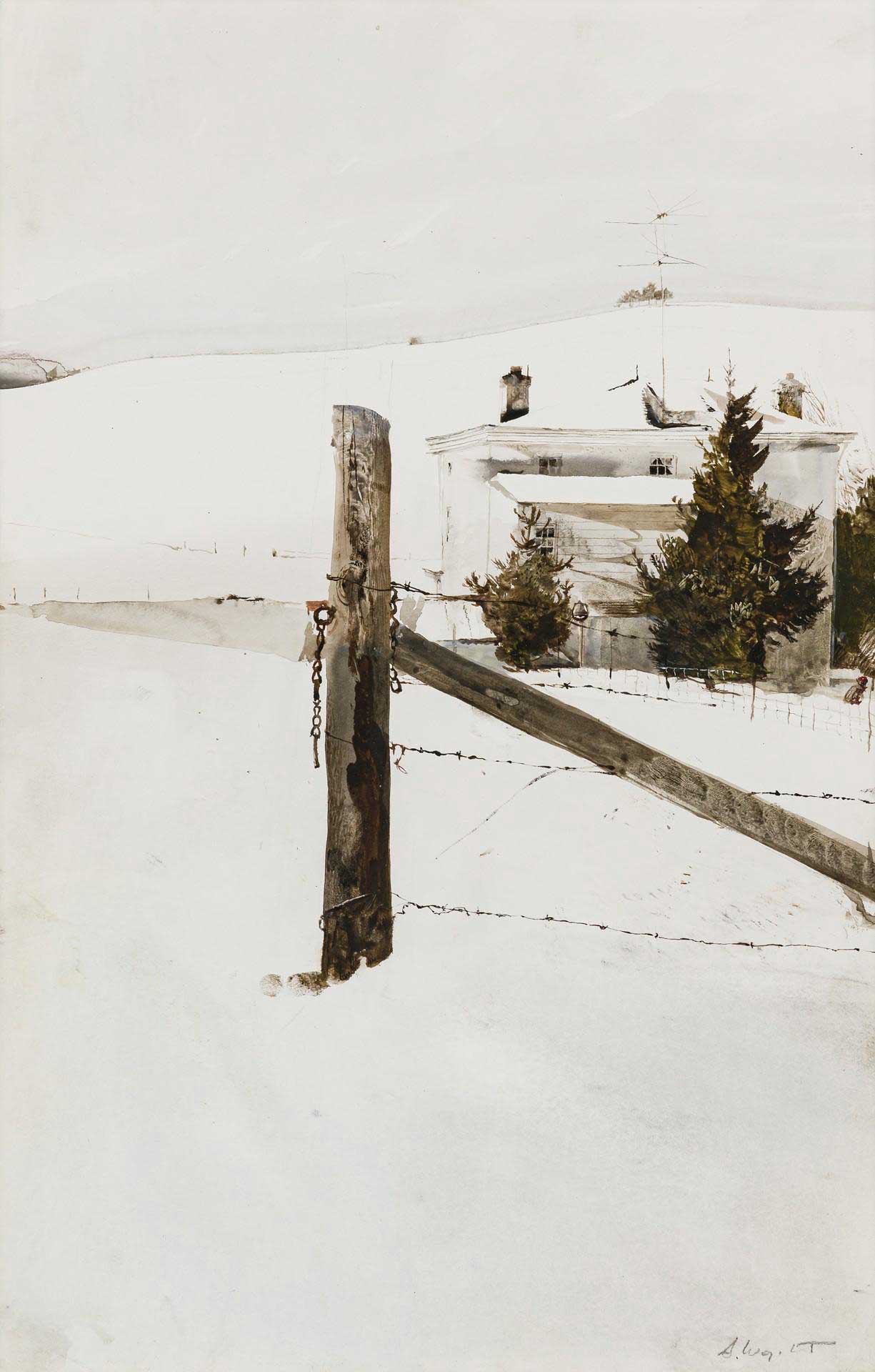
"Gate Chain"
Andrew Wyeth, 1967
Andrew Wyeth's art is renowned for its realism, a style that he achieved through meticulous technique and a disciplined approach to his subject matter. His primary mediums were watercolor and tempera, and he was known for his skilled use of each to create detailed and emotionally charged images.
Drybrush Watercolor Technique: Wyeth often used a technique known as drybrush, where he would apply watercolor with a brush that was relatively dry but still held paint. This method allowed him to achieve a high level of detail and texture that is not typically associated with watercolor. The drybrush technique gave his paintings a grainy quality, almost like that of a pencil drawing, which contributed to the intense realism and the almost tactile quality of his works.
Egg Tempera Technique: Wyeth also frequently worked in egg tempera, a medium that involves mixing powdered pigments with egg yolk to create paint. This technique, which dates back to the ancient world, allowed Wyeth to build up layers of color with a great deal of control. Egg tempera dries quickly and produces a luminous finish, enabling Wyeth to achieve subtle gradations of tone and color and a depth that is difficult to achieve with other mediums.
Magic Realism: While Wyeth’s technique was rooted in realism, his paintings often had a quality of what some critics have called "magic realism." His landscapes and interior scenes, while highly detailed, are not mere reproductions of what he saw. Instead, they are imbued with a sense of mystery and emotion that transcends the ordinary, often evoking a narrative or emotional undertone that suggests a story beyond what is depicted.
Color Palette: Wyeth's color palette tended to be muted and earthy, with a range of ochres, browns, grays, and greens dominating much of his work. This choice of colors contributed to the somber and introspective mood of many of his paintings. However, he also knew when to introduce subtle touches of color to draw the viewer's eye or to emphasize a particular aspect of the composition.
Composition and Perspective: Wyeth's compositions are often noted for their unusual perspectives and the careful arrangement of elements within the frame. He had a knack for leading the viewer's eye through a painting, using compositional techniques to focus attention on certain details while allowing other areas to recede into the background.
Attention to Detail: Wyeth's attention to detail was not just technical but emotional as well. He had the ability to capture not only the fine details of his subjects but also the mood and atmosphere of the moment. His paintings often convey a palpable sense of place and time, as well as the inner life of the people he depicted.
Influence of Photography: Wyeth was also influenced by photography, and this is evident in the way he framed his subjects and in his keen observation of light and shadow. He often used photographs as references for his paintings, which helped him capture a frozen moment in time with precision and clarity.
I love to walk in newly fallen snow at dusk. It is so peaceful. - Wendy Robards
Being the first one up and outside after a nighttime, glittery snowfall. We live on a small dairy farm. It is so peaceful, quiet and beautiful on a snowy, winter morning. - Brenda Carroll
There is a Danish practice called "Hygee." It's all about comfort and nourishment. In the mountains where I live, it's already below freezing at night. This winter, I'm going to drink hot chocolate, have a couple of colorful warm throws nearby, knit scarves for the family, wear thick socks and warm slippers. And, make art, of course. - Christine O'Brien
I live in Australia so I don't experience snow in winter, but when its cold I like to light a scented candle, put on my fairy lights and draw, read or journal. I make a tea while I do this too, and make time for a morning walk to smell the crisp, winter air. Oh, and eating chocolate is part of this too!. - Elyn Ardino
I really enjoy this time of year because I get to sit and snuggle in at the end of the day with my kiddos, some hot tea and my sketchbook. During the spring and summer we are so busy with kids sports and working outside around our small farm, I don’t get a chance to just sit and take it in! I use this time to sketch from the many pictures I take of my garden and hikes during the summer. It brings back the sunshine on the days it’s dark so early! - Jessica Jidas
I am all about "hygge " I live in Malta now,so it never gets really cold, but we still have a fireplace, loads of tea lights in pretty glasses ,I do some paper crafting,and trying to catch up with all the things that get neglected in the summer heat,like painting and sketching.
Oh and make soup.Nothing nicer than sitting painting,while the aroma of a simmering pot of soup fills the house. I am a winter person for sure. - Vivi Fenech
I love to take pictures of the first snowfall (or any snowfall). Before being an artist (painter) I was a photographer! I also love to make seed pinecone ornaments for the wild birds! - Maria Overlay
I place candles all around the house. We bake bread. My yoga is more restorative. Softer…slower. I sleep more and take long baths. I wrap up in layers of soft fabrics go outside and let nature wrap her arms around me. I curl up on the couch with my dog and sip warm adaptogenic drinks first thing in the AM and let my thoughts float by. - Susan Varga
The Solstice is a wonderful opportunity to pare down what we consider essential. The busy-ness of summer fades into tree tracery silhouetted against skies of every shade of soft gray. While we may miss brightly hued lilies, the scent of roses, and the glory of fall leaves, our souls long to be quiet, still, warm, and listening. What are our hearts saying to us? I festoon the house with fairy lights and add extra candles with winter scented essential oils in them - scents like balsam and cedarwood mixed with orange. They are both soothing and elevating. I make these and other aromatherapy gifts for friends. I wear festive fuzzy socks and my favorite snow colored sweater. Last year I sketched with graphite and charcoal by candle light. It was wonderful. I listened to George Winston and found comfort in the sound of charcoal and graphite blocks scratching on the paper. I will definitely be doing this again this year. So meditative! For me, winter is a time to give gratitude, heal, and recoup. Even though I will not ski or snowshoe this winter, it is without a doubt my favorite season. - Gail Marlow
I was born in January under a balsamic moon and winter is my favorite time of year. My spirit is invigorated by the crisp cold, quiet and glittering snow (when we get it where I live) and the restorative time I spend turning inward for renewal. I've been practicing a ritual for winter solstice for over 25 years, gathering the gifts of nature and bundling them to toss into the Yule log firelight, releasing what no longer serves me. Creatively, I tend to write more in winter, and spend more time in my studio, because the garden is sleeping. I'm also inspired by winter sunsets...with colder air and less humidity, the colors in the sky are more brilliant, accented by the black silhouettes of the branches of trees. - Martha Lyon Barnett
Create a series of color studies using a limited palette of whites, grays, blues, and earth tones. Experiment with how these colors can convey the mood of a winter landscape.
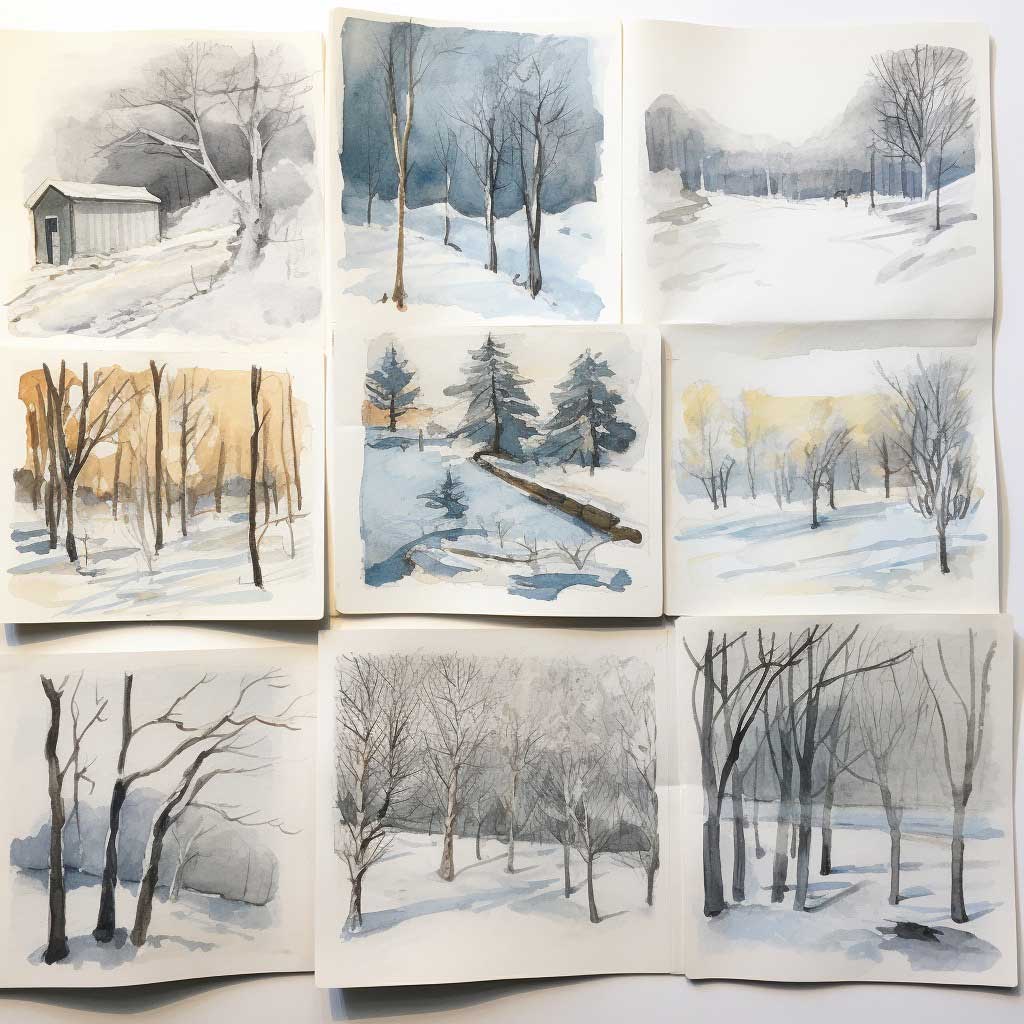
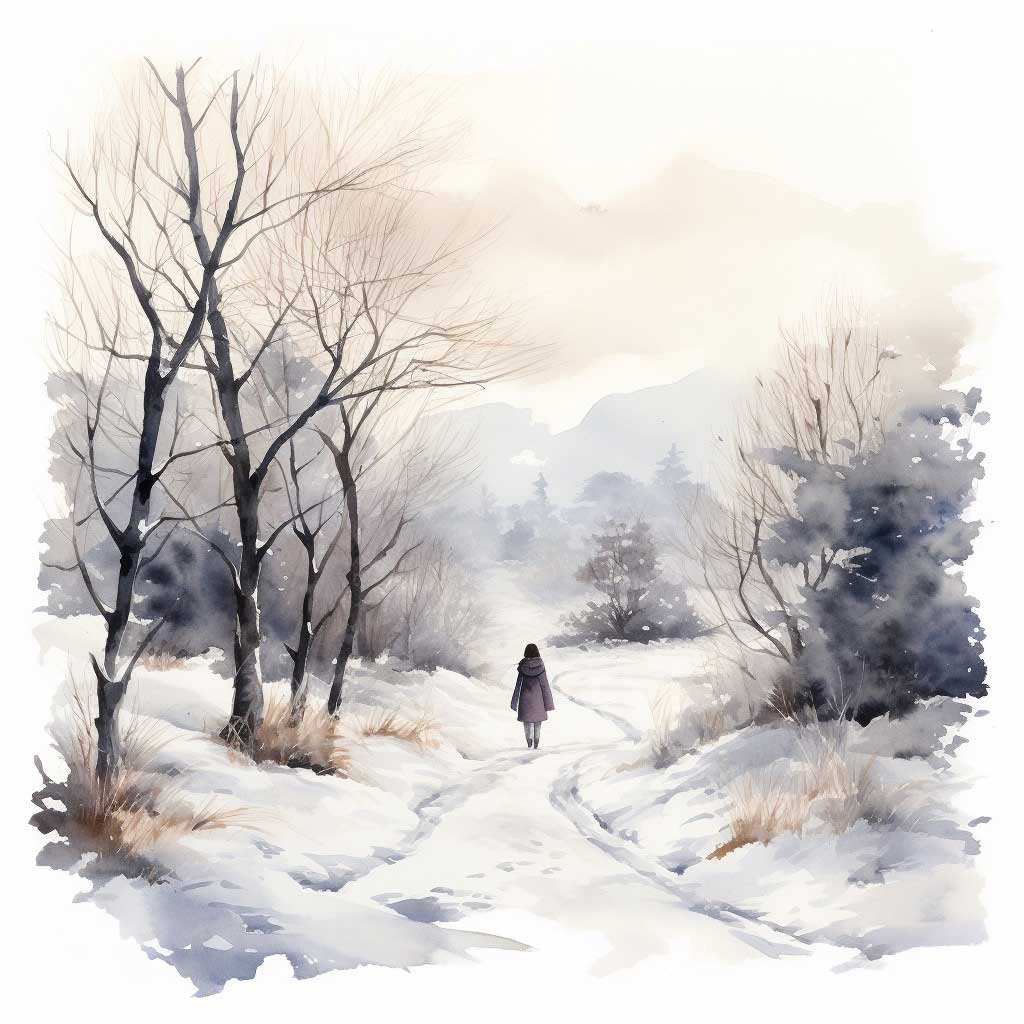
Draw a scene that embodies solitude. This could be a lone figure in a vast landscape, a single animal in a snowy field, or a quiet, empty interior space.
Create a master study or a piece inspired by our monthly artist, Andrew Wyeth. Focus on how introspective many of Wyeth’s pieces are and how he captures the solace of winter. Reflect on how his work makes you feel and note this in your journals or sketchbooks.
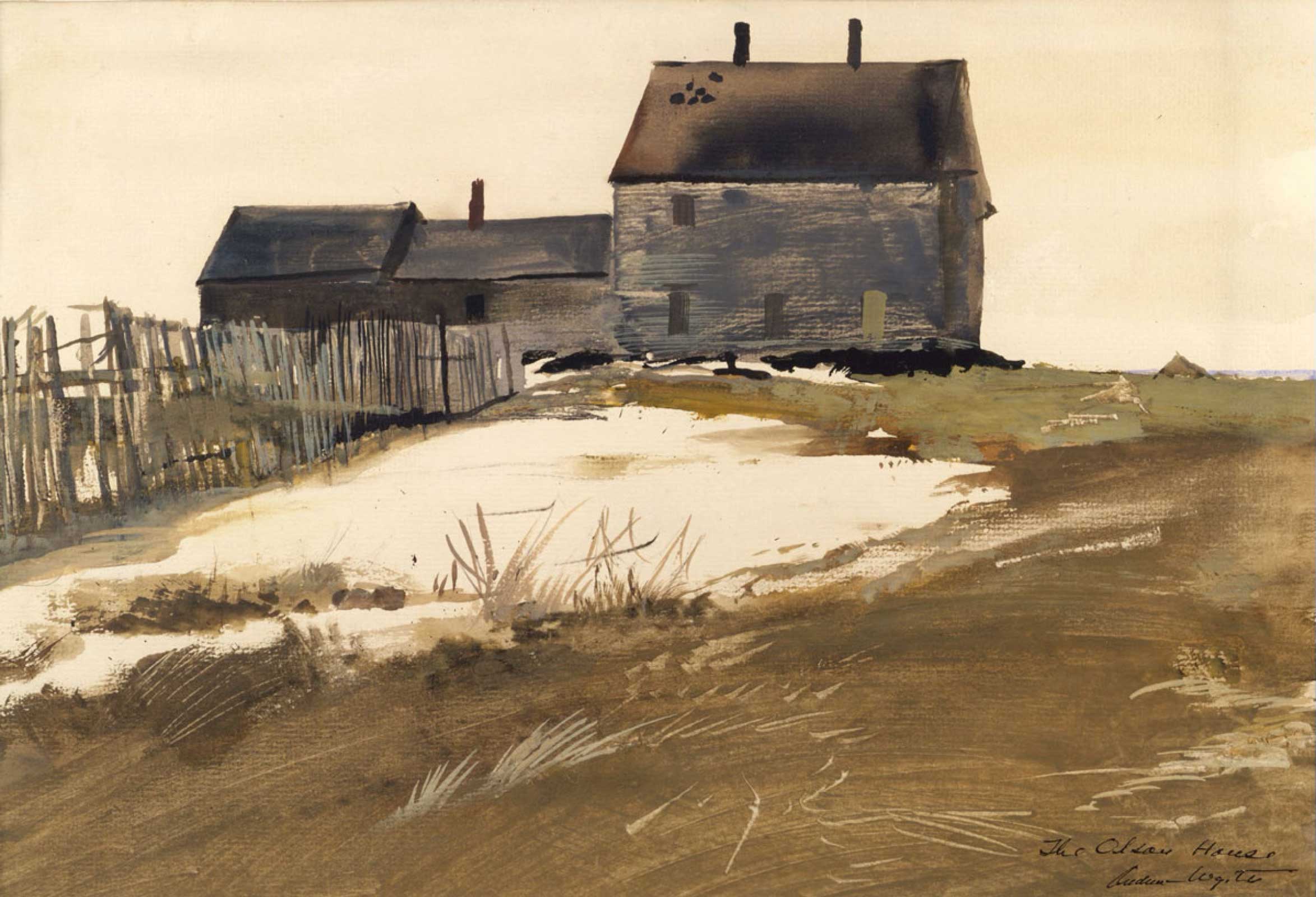
I’m delighted to share this fun witchy lesson with you for our month focused on this mystical time of year with Halloween and Samhain as our inspiration! I wanted the materials to be very limited and it was such a great challenge to work on switch things up and work on black paper!
We focus on creating light from the shadows in this lesson so this is a wonderful way to challenge our creative minds and our observation skills. If you don’t want to do a face your can check out the image gallery below, I have curated other images too of cats and crows that could be fabulous to create on the black paper. Just convert any color images into black and white to help you see the values.
Have fun and enjoy!
You can also listen to this month’s issue of the Studioworks journal. I find I love listening to books, podcasts and music while I draw, paint or go on a long walk. Enjoy.


One of my favorite things to do is to curate inspiration. From Pinterest boards to books, resources, playlists and more - I love to share anything that might facilitate learning, expansion, and sparks of curiosity! Being an artist, we naturally crave these things so here are some of this month’s picks from me to you.
I had so much fun curating this list. I hope you enjoy!!
Here are just a few of our fantastic classes! I highly recommend checking them out if you haven’t already. Enjoy!